Venice or Venezia in Italian, is a magical city, with nothing else comparable in the world. Founded in 421, it’s built over a group of 118 small islands in the shallow Venetian Lagoon, connected by hundreds of bridges to form a cohesive city on water. The Republic of Venice was a major financial and maritime power during the Middle Ages and Renaissance, encompassing local cities such as Verona and Trieste, and extending as far as Greece and Cyprus.
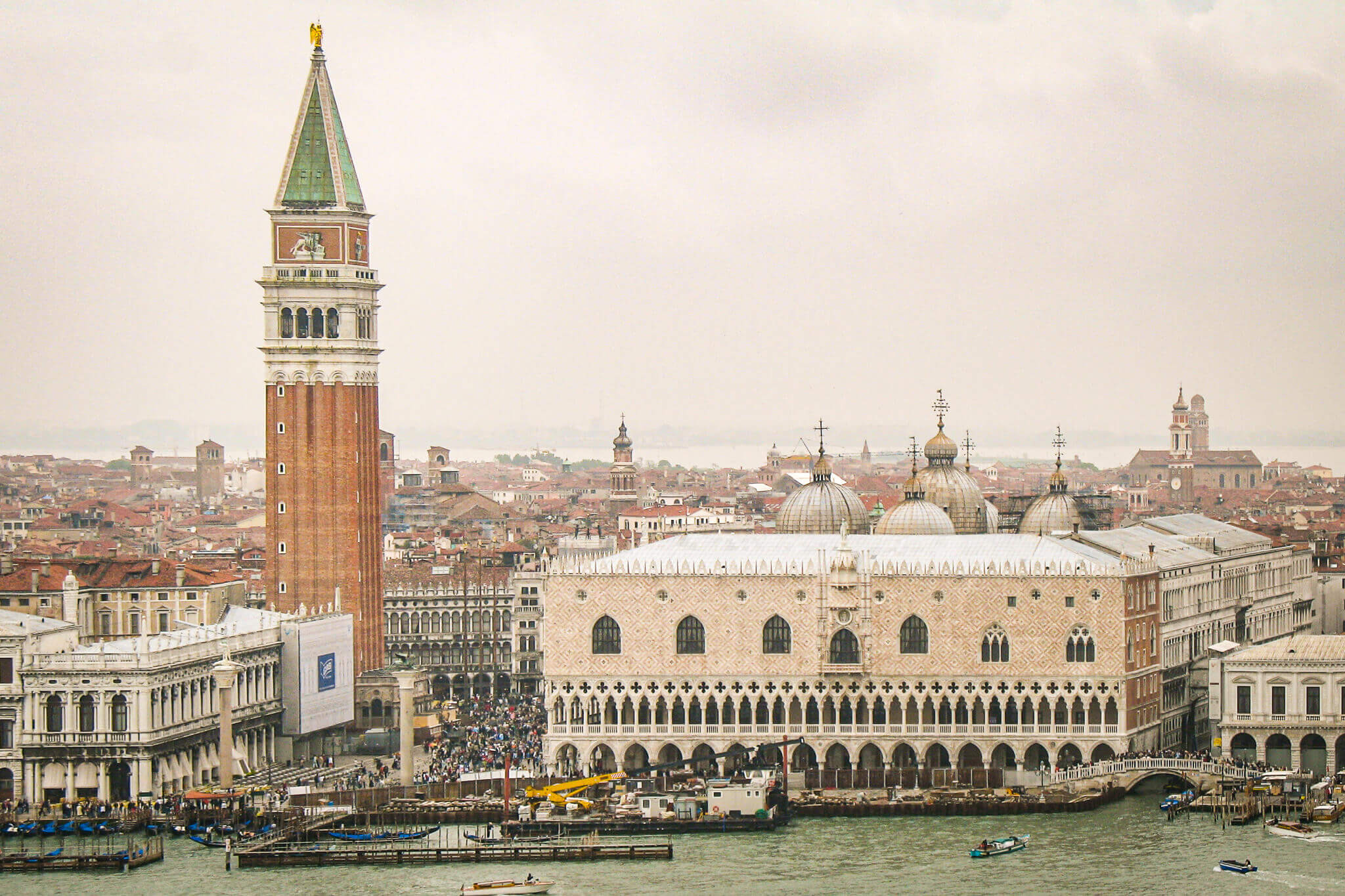
Venice played an important role in the history of music and art. Much of the art and architecture of the city is found in the churches, which feature heavily into this itinerary for 3 days in Venice.

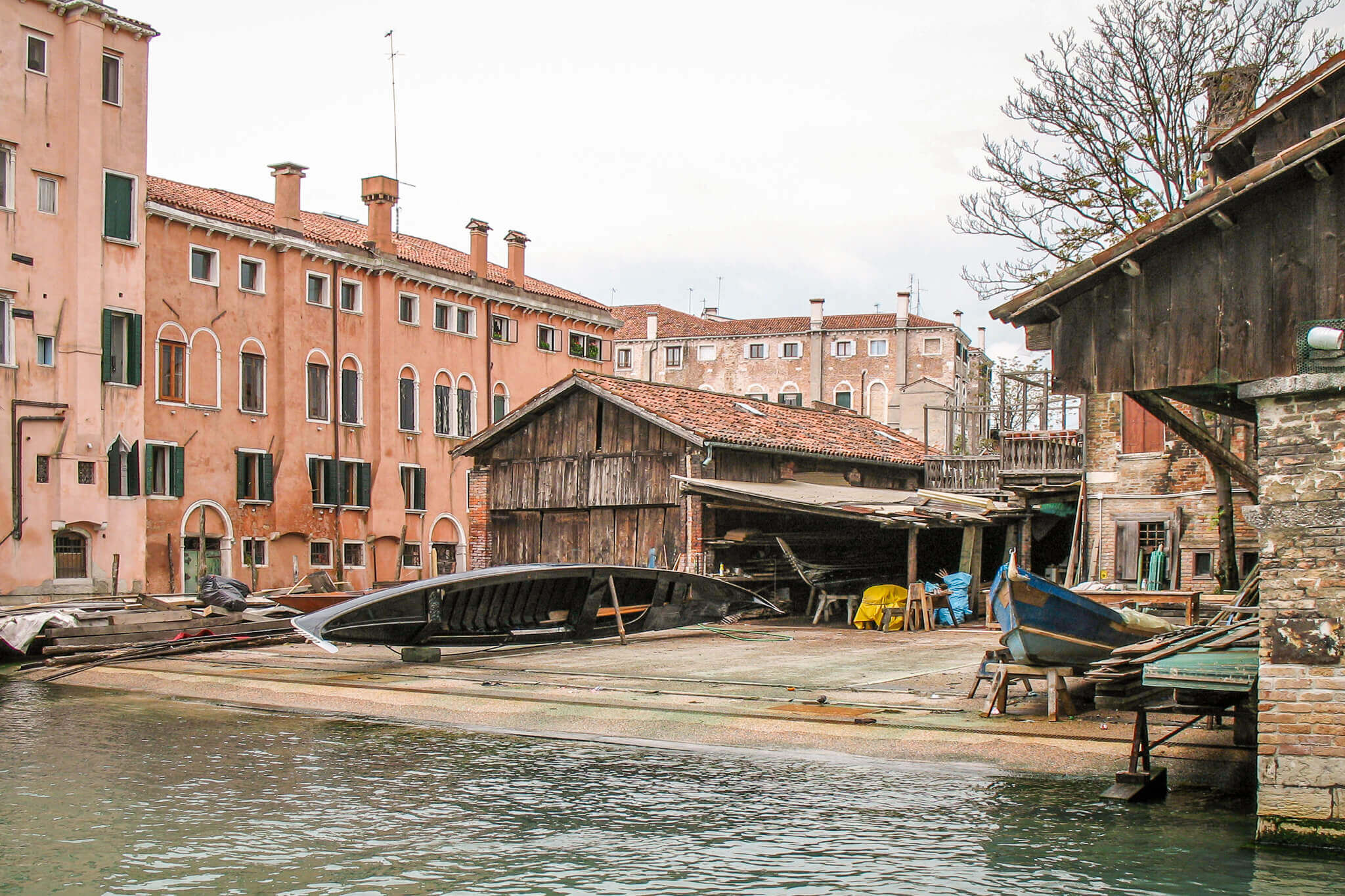
While most tourists spend less than a day in Venice, and visit only the Piazza San Marco area, we delve much deeper into the history and culture of Venice. Much of this history is steeped in architecture and art of its Gothic and Baroque churches and basilicas. Wealthy church patrons would show their wealth (and relieve their guilt) by funding the church architecture, art and funerary monuments. But don’t get put off by the number of churches in this itinerary… many are just quick visits along your walk.
Depending on which churches you plan on going inside, look into the Chorus Pass, which includes entrance into several Venetian churches included in this itinerary.
Contents
- Day 1 – San Marco Basilica, Doge’s Palace, Museo Correr, San Moisè and the San Giorgio Maggiore campanile
- Day 2 – Rialto, Santa Maria dei Miracoli, Santi Giovanni e Paolo, Santa Maria Formosa, Venetian Arsenal and Giardini della Biennale
- Day 3 – Churches of Venice
Day 1 – San Marco Basilica, Doge’s Palace, Museo Correr, San Moisè and the San Giorgio Maggiore campanile
Piazza San Marco and Saint Mark’s Basilica
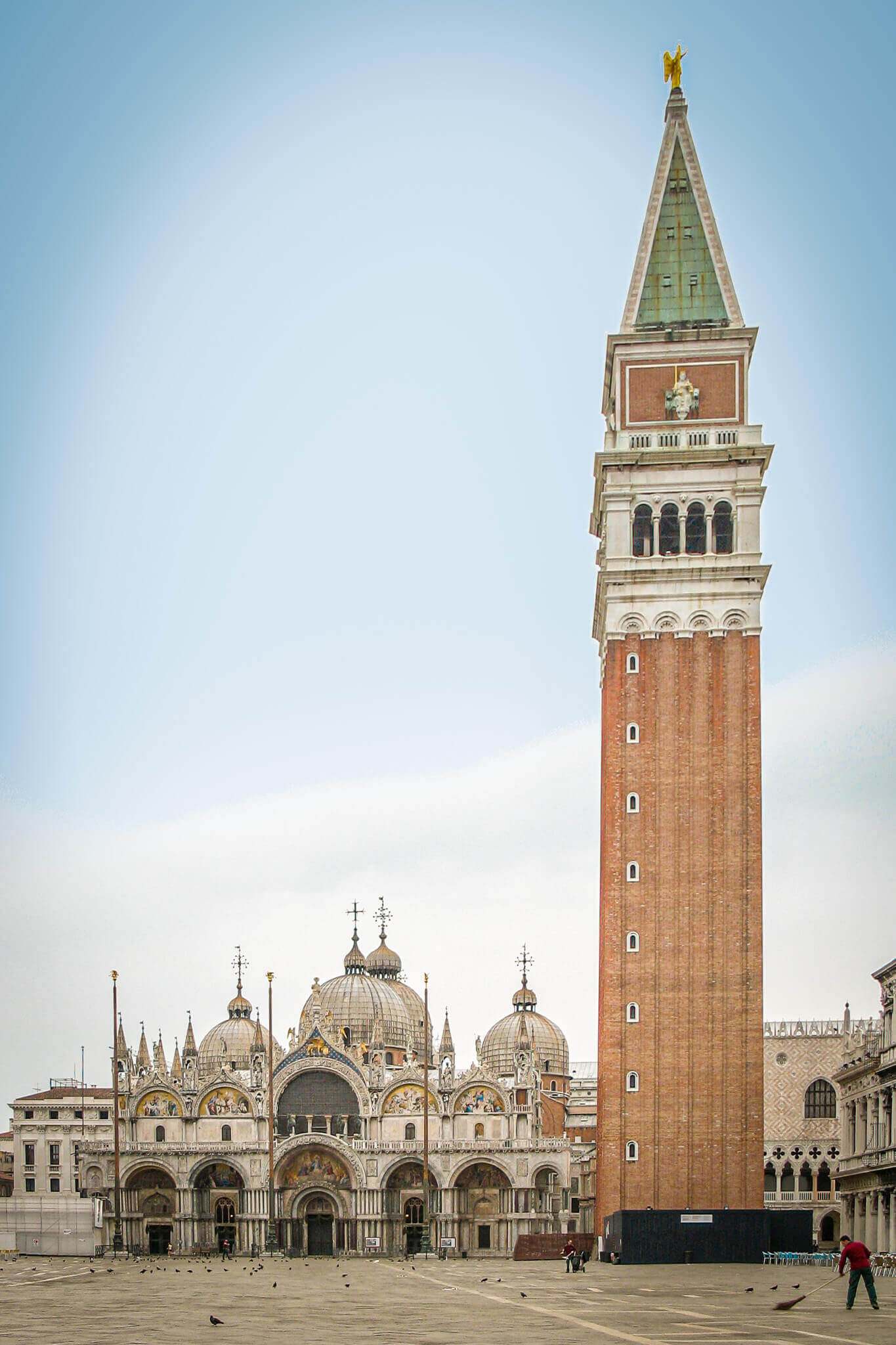
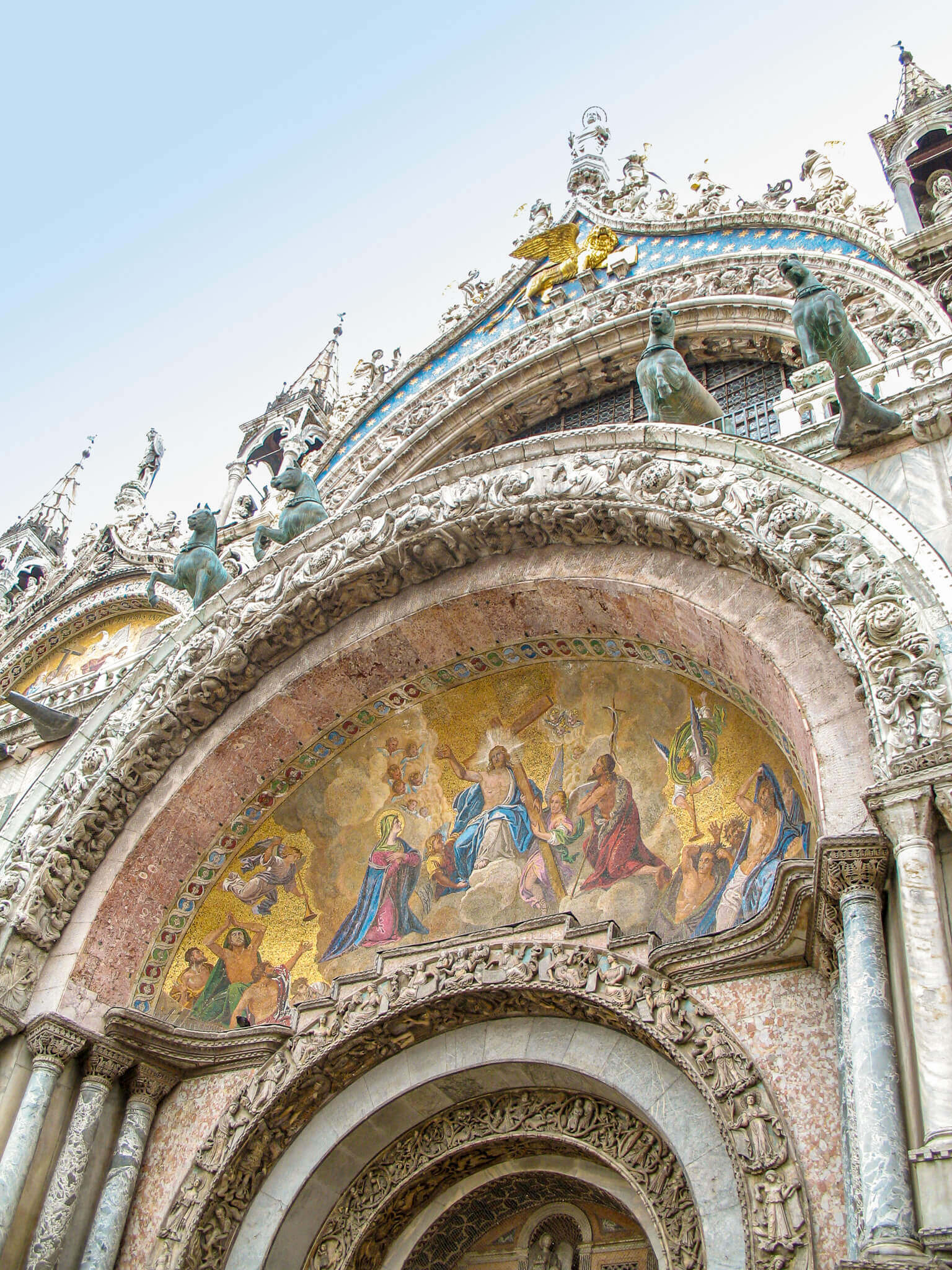
Since no trip to Venice is complete without visiting Piazza San Marco and the San Marco basilica, let’s start there. Piazza San Marco, or Saint Mark’s square, is the main square of Venice overlooked by Saint Mark’s basilica and its imposing bell tower or campanile.
Palazzo Ducale
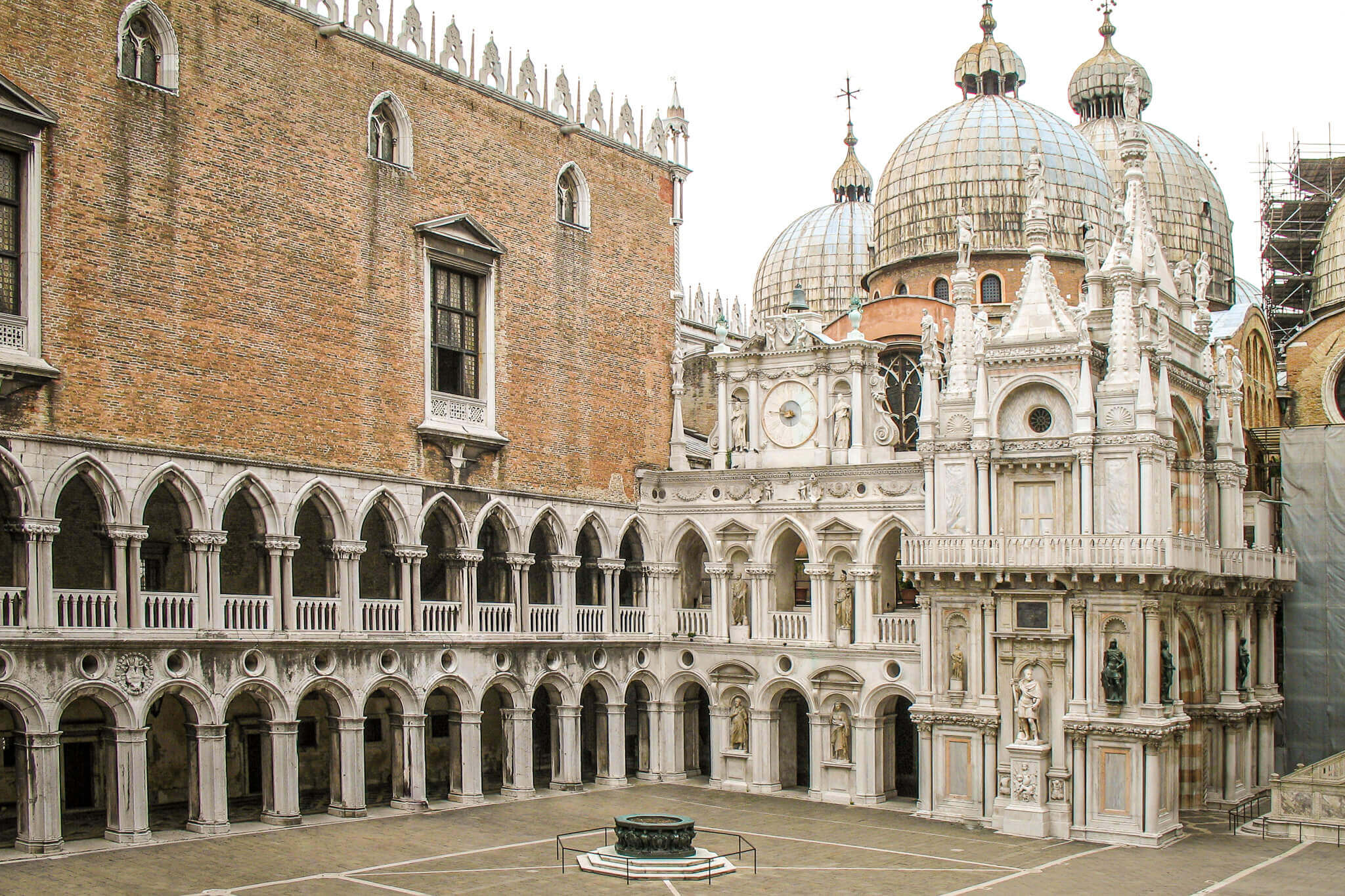
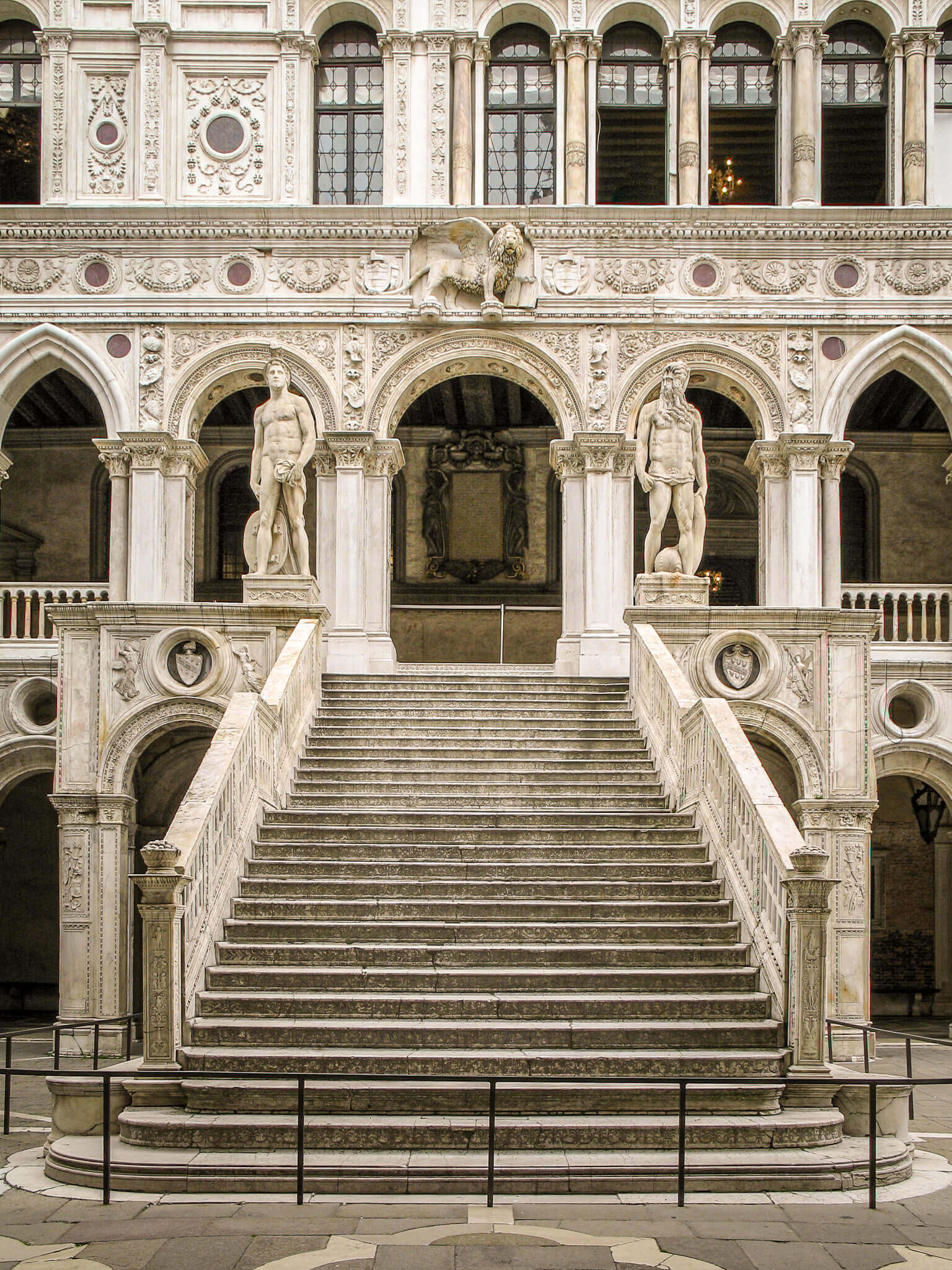
Connected to the basilica is the Doge’s Palace (Palazzo Ducale), the former palace and residence of Doge, the leader of Venice elected for life by the Venetian aristocracy, until 1797 when Napoleon conquered the city. The oldest surviving parts date from 1340. Now a museum, it’s worth a visit to see stunning examples of Venetian architecture.
Museo Correr

The collection of the Museo Correr, bordering the western side of Piazza San Marco facing the basilica, began as a private collection before it was bequeathed to the city of Venice. The building is known as the Napoleonic Wing, and dates from a brief period when Napoleon was King of Italy. The museum illustrates the life and culture of Venice through its history, and also includes an art collection including Venetian painters and sculptors.
San Moisè
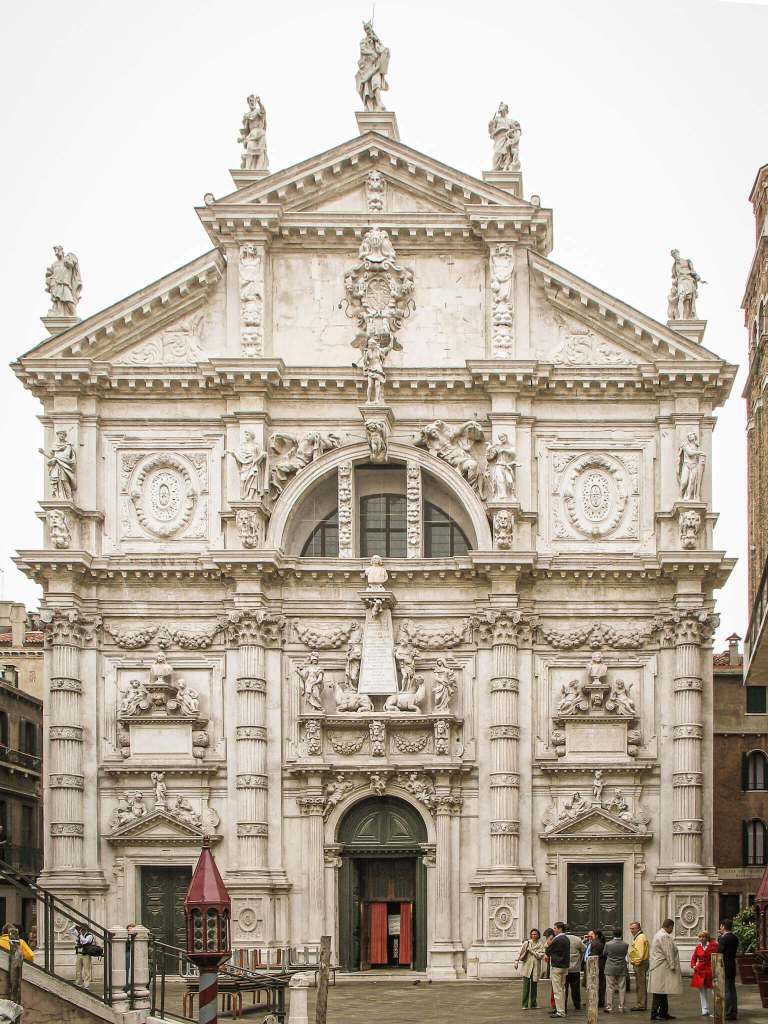
Tucked in a bit behind the museum is the San Moisè church, originally built in the 8th century, with a beautifully ornate Baroque facade dating from 1668. Since statues in public spaces were forbidden at the time, the church patron had his bust installed over the central doors.
San Giorgio Maggiore
To end the day, we’ll catch a water taxi from just west of the Palazzo Ducale, to the San Giorgio Maggiore church, on San Giorgio island. Directly across the lagoon from Piazza San Marco and the Basilica, the top of San Giorgio Maggiore’s belltower or campanile offers panoramic views of Venice and the surrounding lagoon.
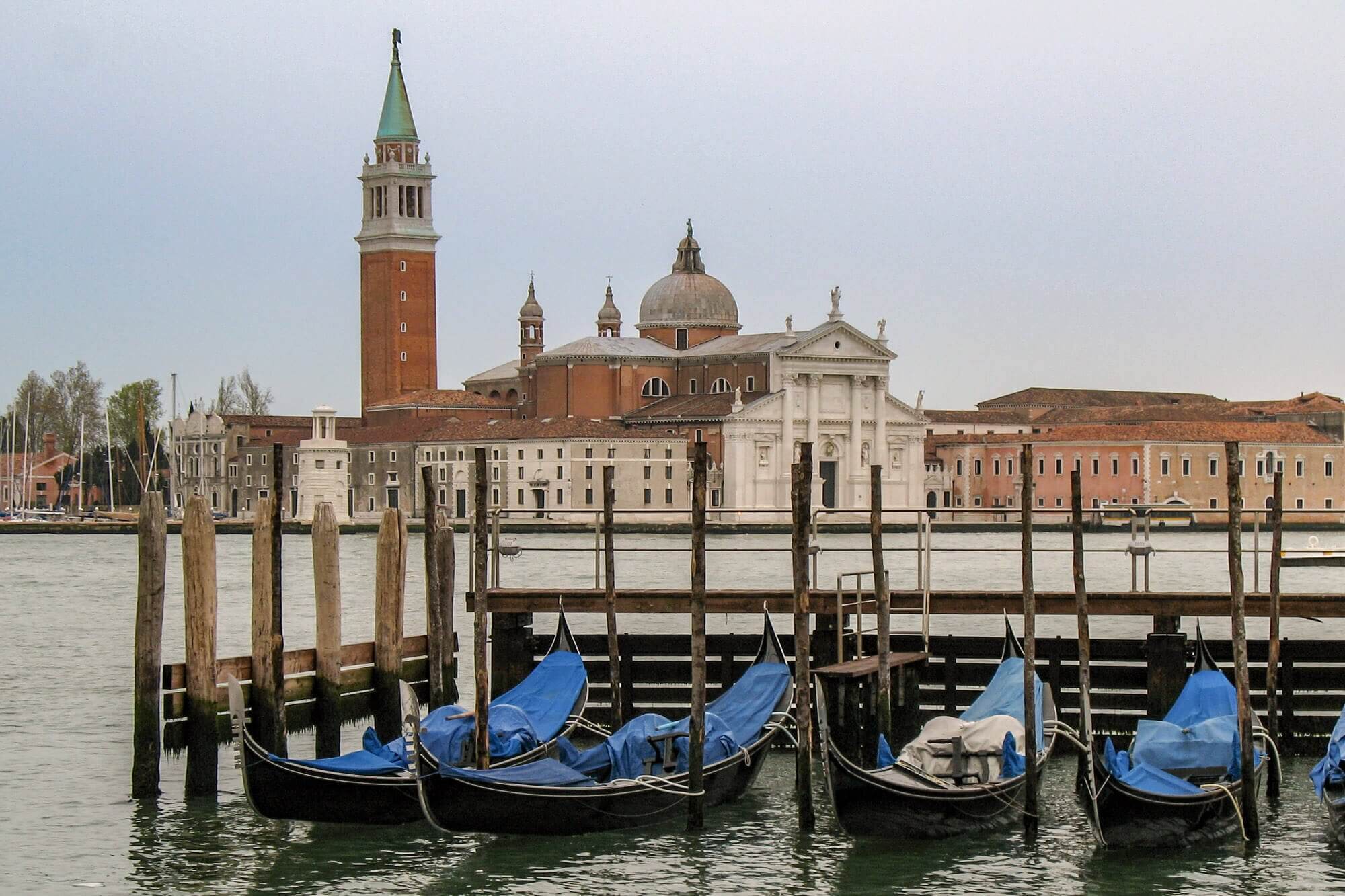
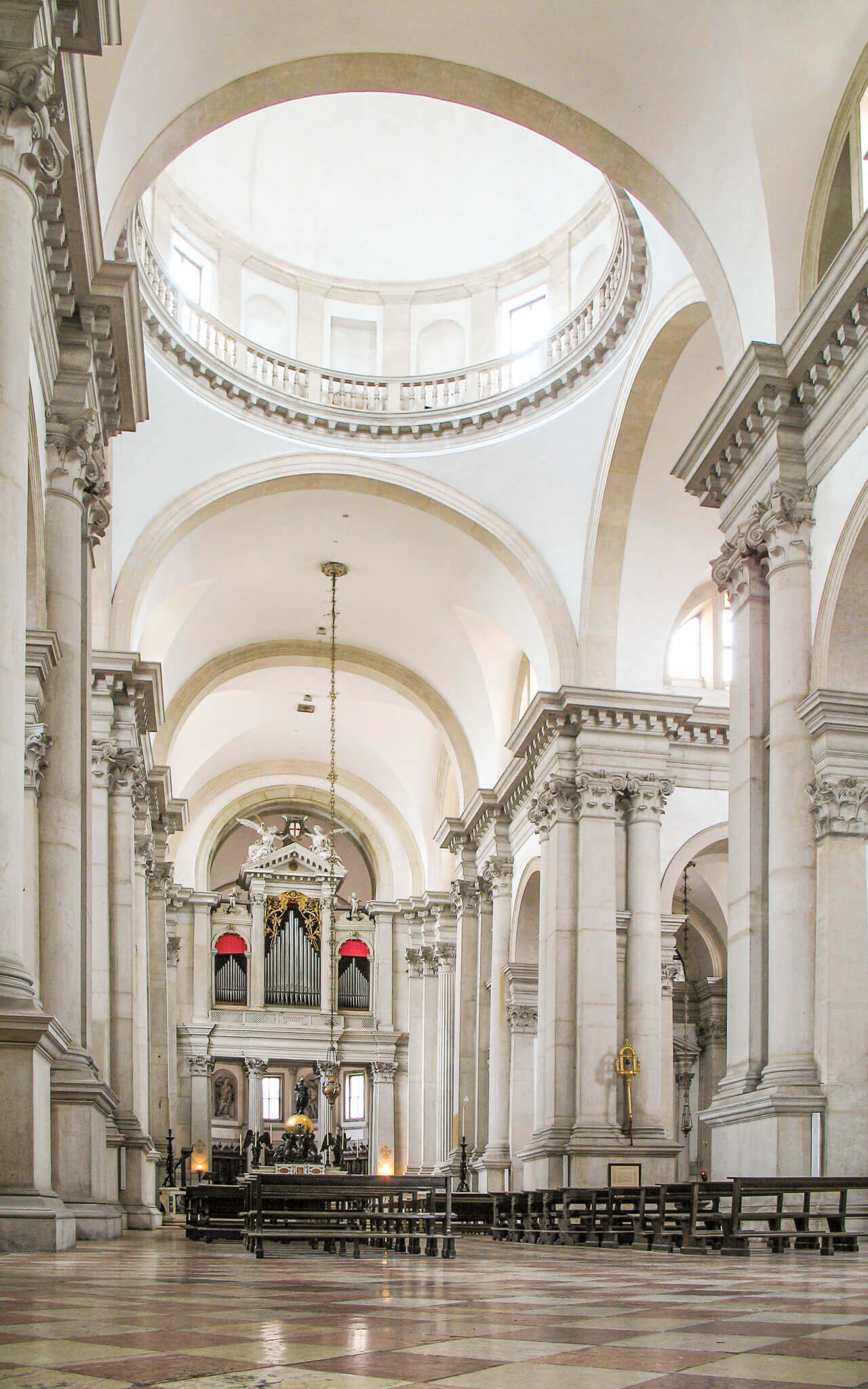
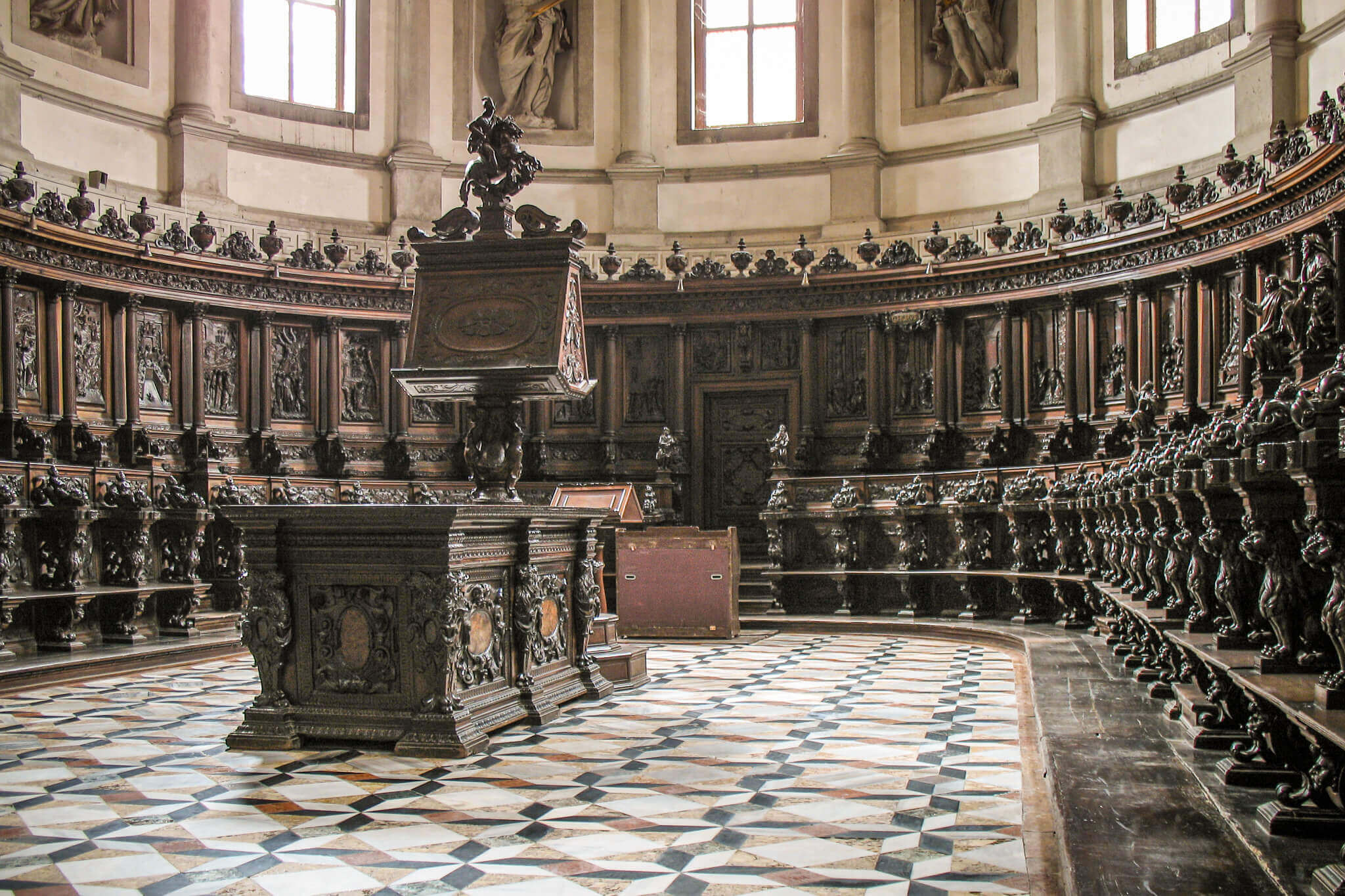

Day 2 – Rialto, Santa Maria dei Miracoli, Santi Giovanni e Paolo, Santa Maria Formosa, Venetian Arsenal and Giardini della Biennale
Rialto Market and Pescheria
We’ll start day 2 in the central Rialto area of Venice. This area grew in importance when the market moved here in 1097. It also features in Shakespeare’s Merchant of Venice. Browse the fruit and vegetable stalls of the Rialto Market, and checkout the impressive selection at the Fish Market (Pescheria).
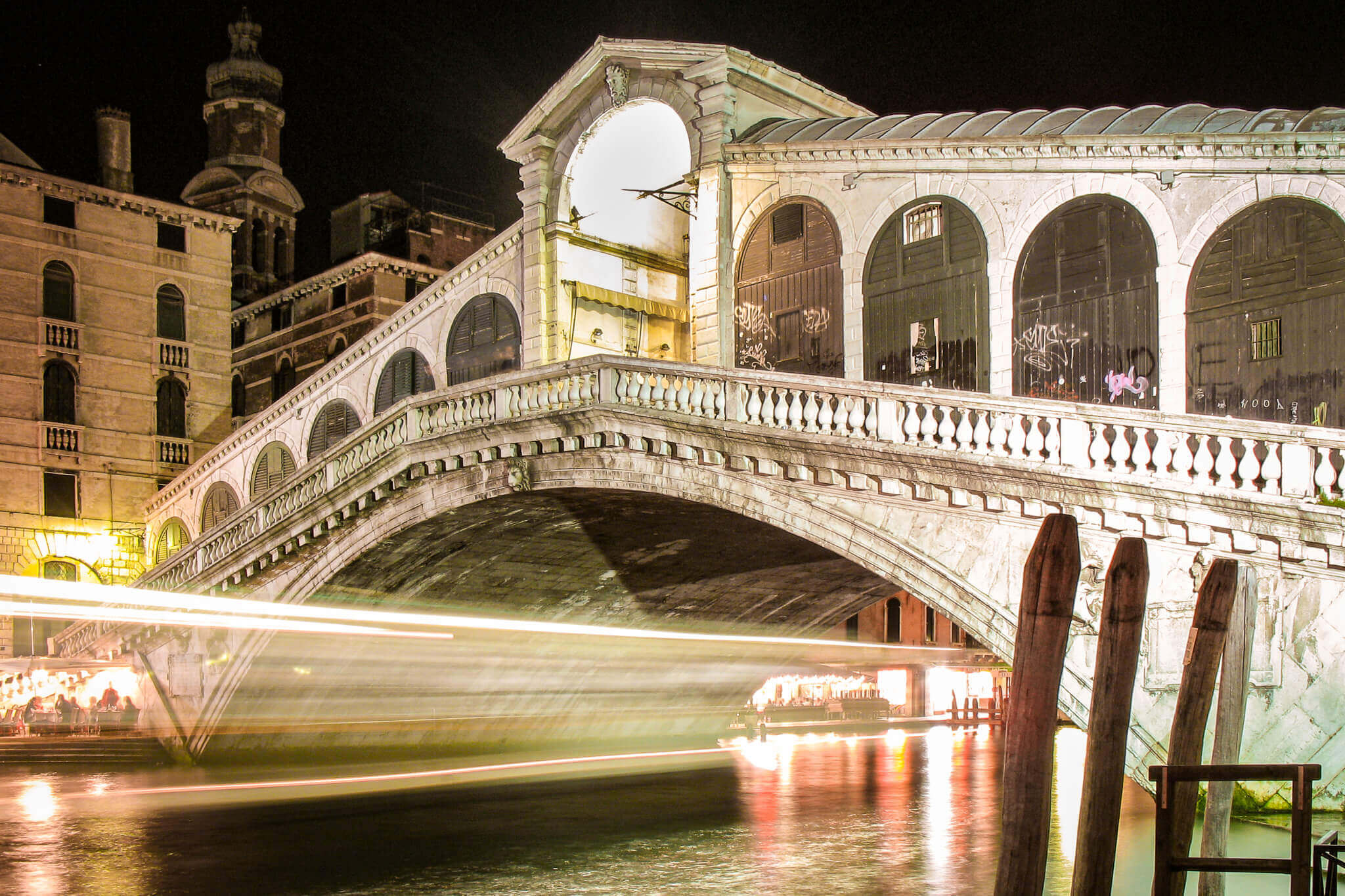
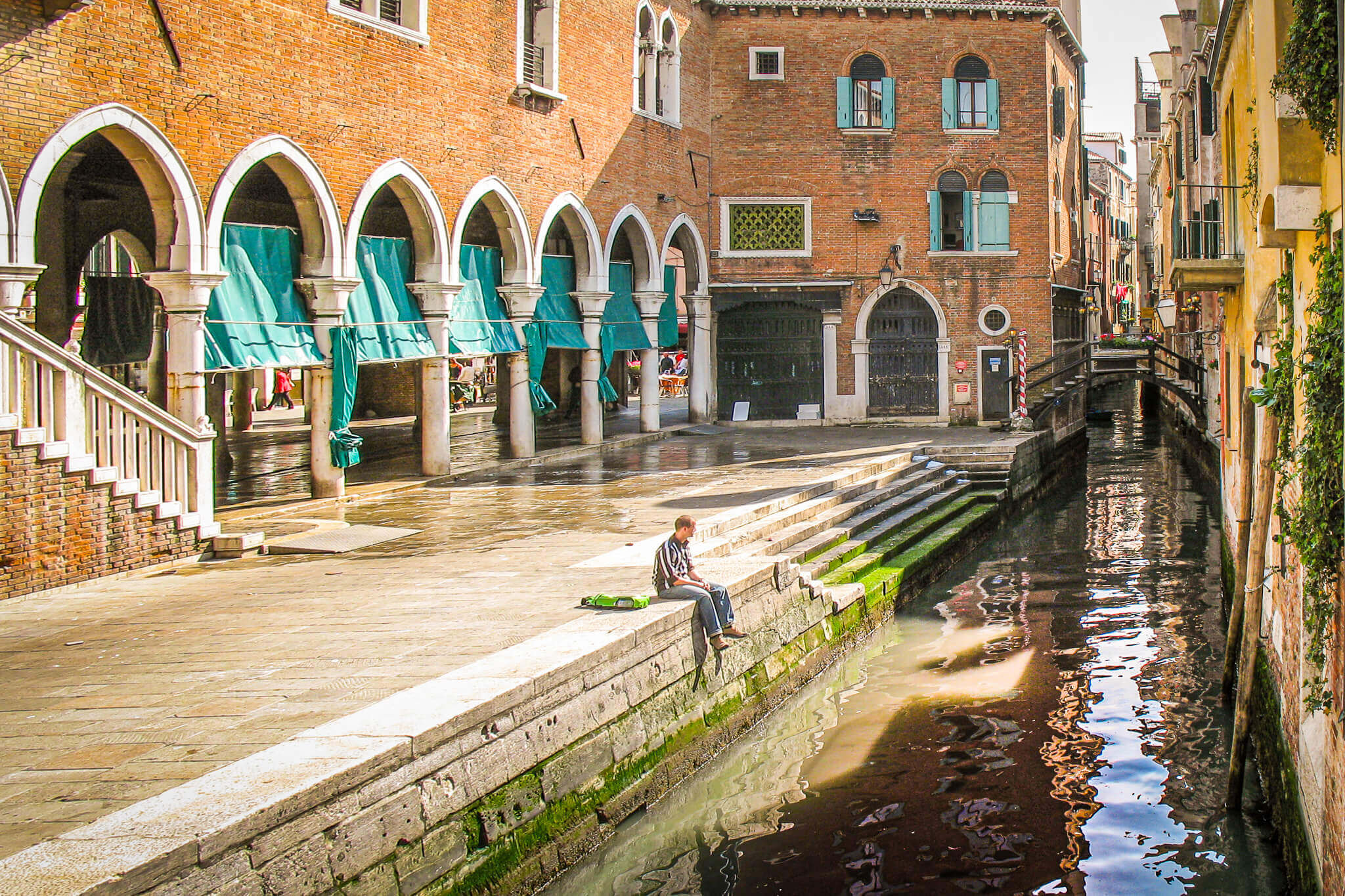
Explore the Campo San Giacomo di Rialto square. The church, San Giacomo di Rialto, is said to be the oldest church in Venice, supposedly dating to 421, although the first documented references of the church date to 1152. Miraculously, in 1503 it survived a fire that destroyed the entire Rialto area. Free entrance.
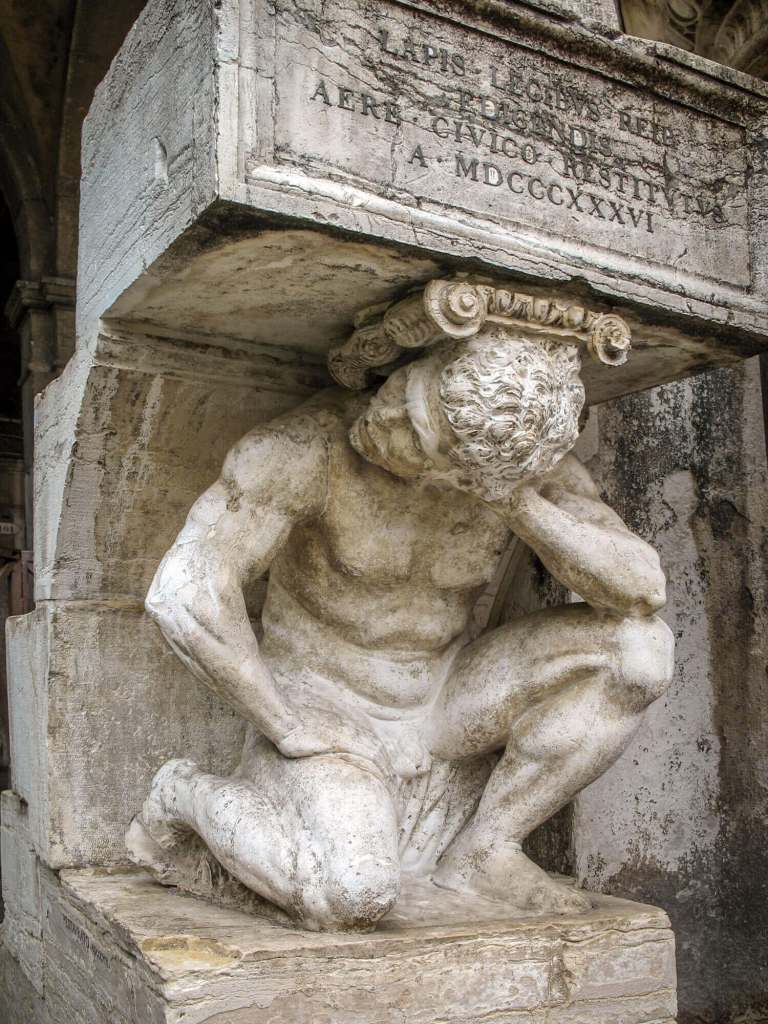
Opposite the church, you’ll find the granite sculpture of Il Gobbo di Rialto, the hunchback of the Rialto. Unveiled in 1541, it has an interesting history.
Next, we’ll cross the Rialto Bridge, the oldest of the 4 bridges spanning the Grand Canal in Venice as we venture eastward. The current stone bridge was built between 1588 and 1591, replacing earlier wood bridges. It was the only bridge crossing the Grand Canal until 1854. Since there are only 4 bridges crossing the Grand Canal, there are traghetto ferries at various points, which are gondolas that simply cross the canal (and for only a couple euros, the cheapest way to experience a gondola ride).
Santa Maria dei Miracoli
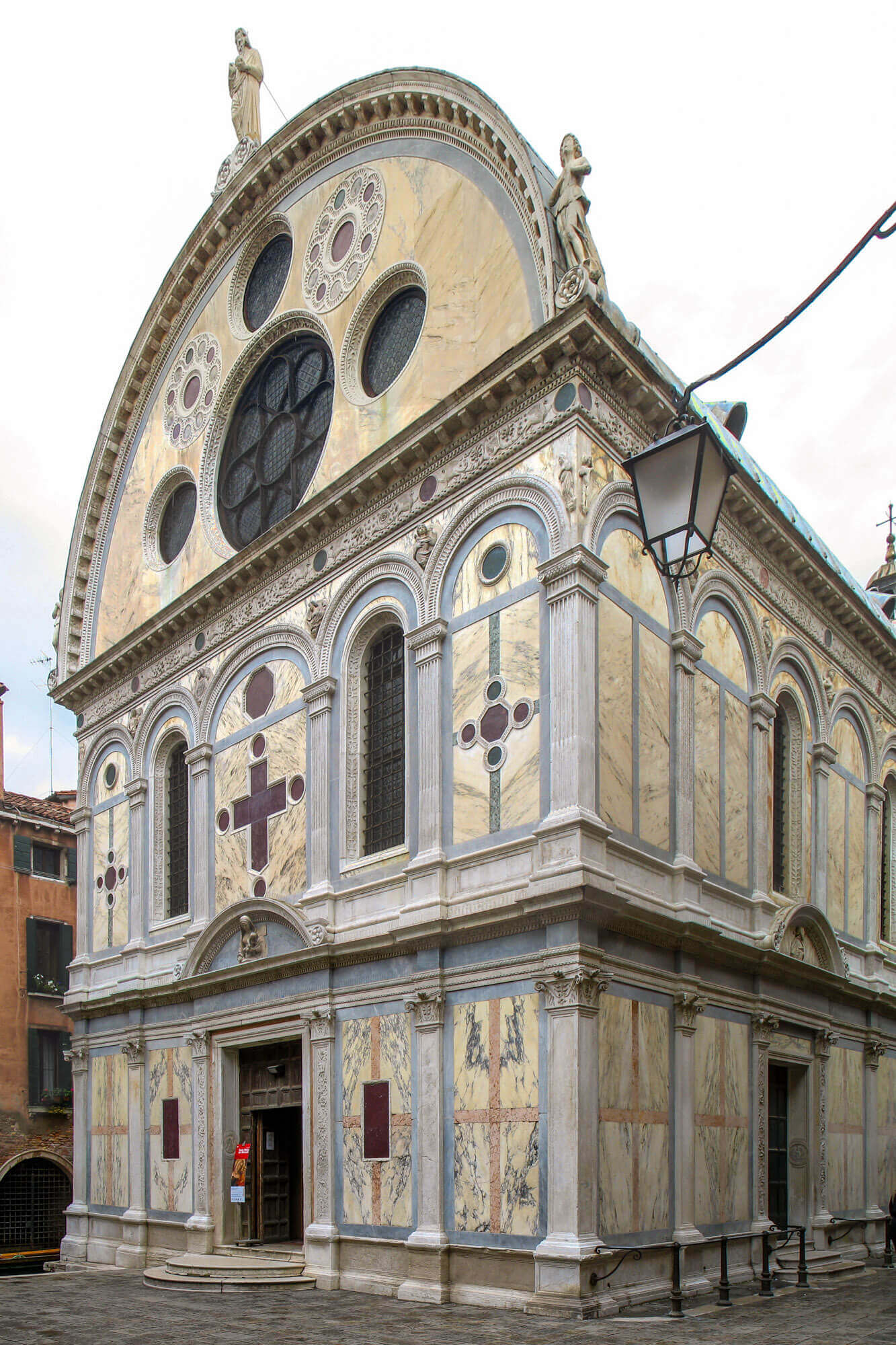
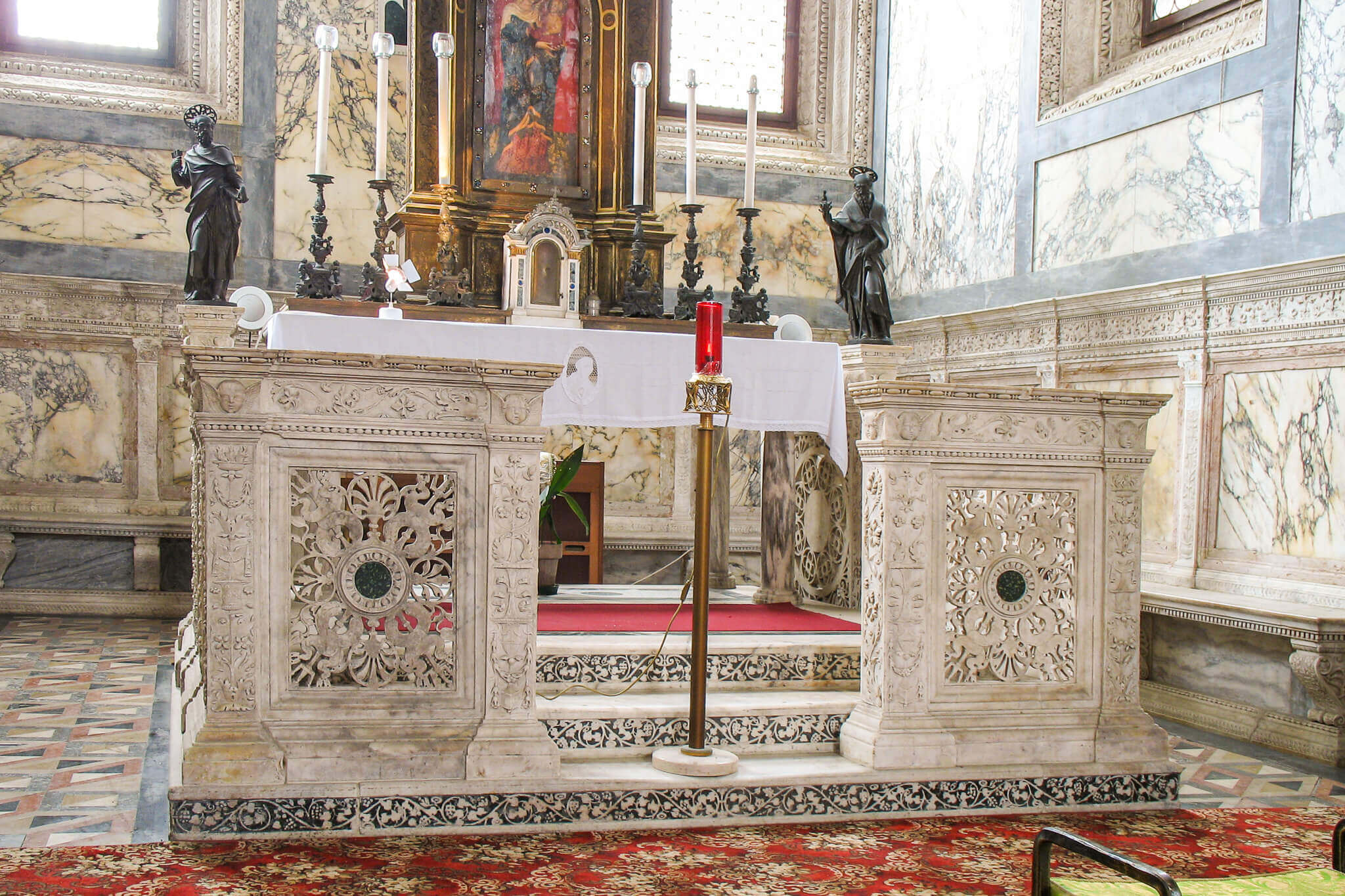
A short distance away is Santa Maria dei Miracoli, a beautiful marble from the early Renaissance period, built between 1481 and 1489. Its exterior and interior are fully clad in coloured marble. It also has a lovely coffered ceiling. Part of Chorus Pass.
Santi Giovanni e Paolo

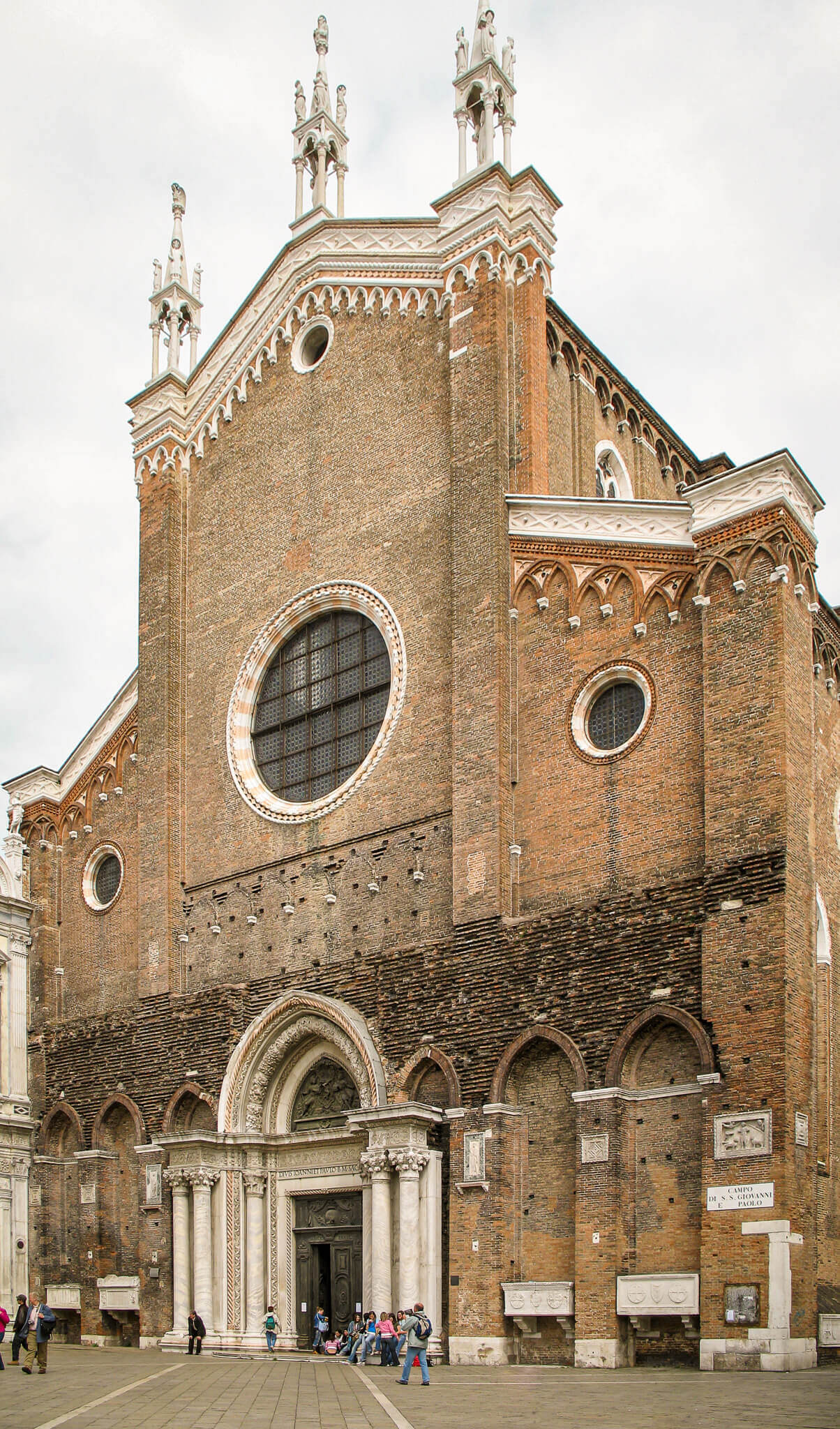
A bit further east is the Santi Giovanni e Paolo basilica, a large brick-clad Italian Gothic church. Built between 1330 and 1450 it dwarfs the Renaissance marble facade (with Byzantine elements) of the neighbouring hospital. From the 15th century onwards, the basilica was the location of the doges’ funerals and 25 doges are buried here. Today, it’s worth a visit to see the doges’ stunning funerary monuments. A small entrance fee applies (not part of Chorus Pass).
Santa Maria Formosa
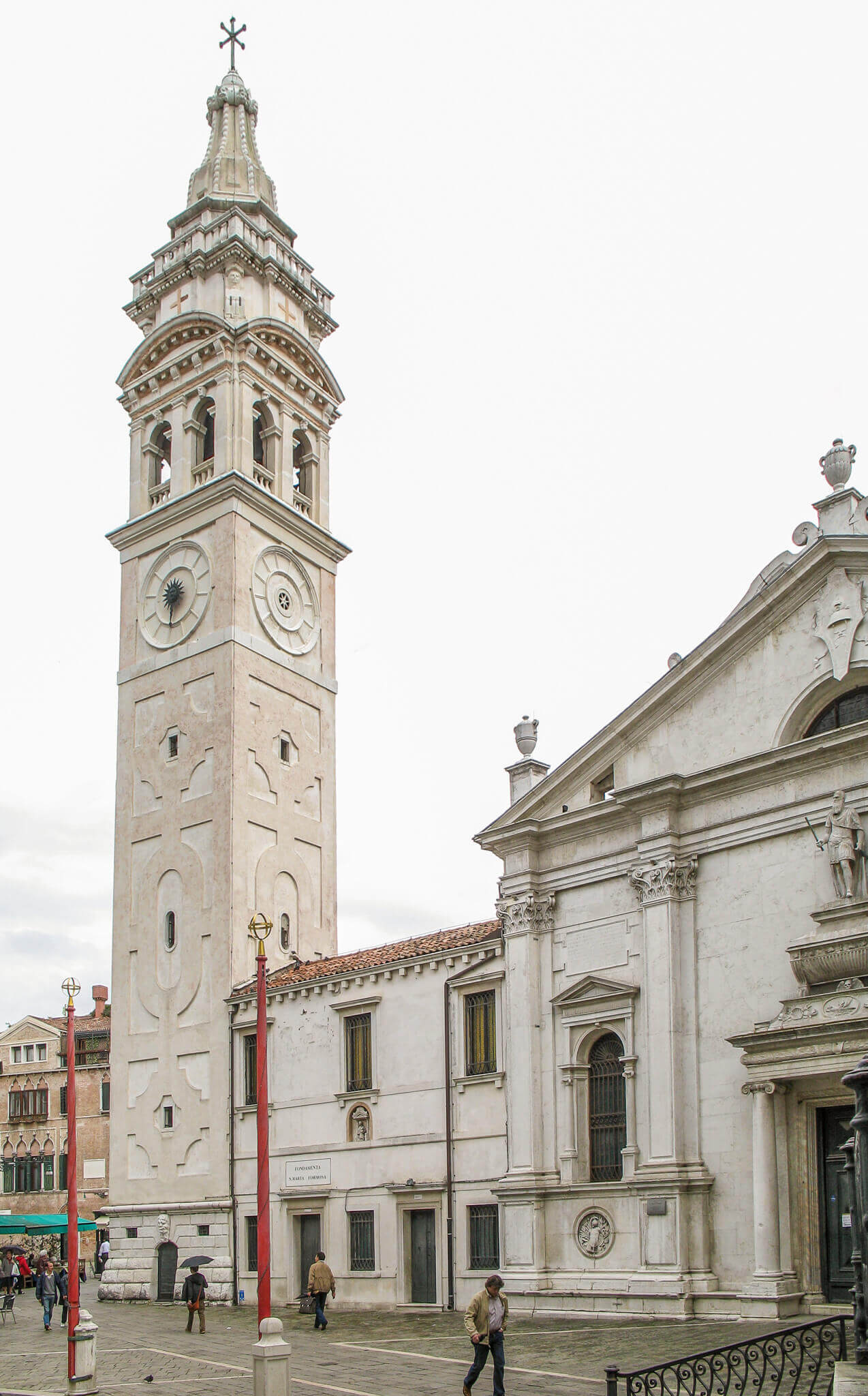
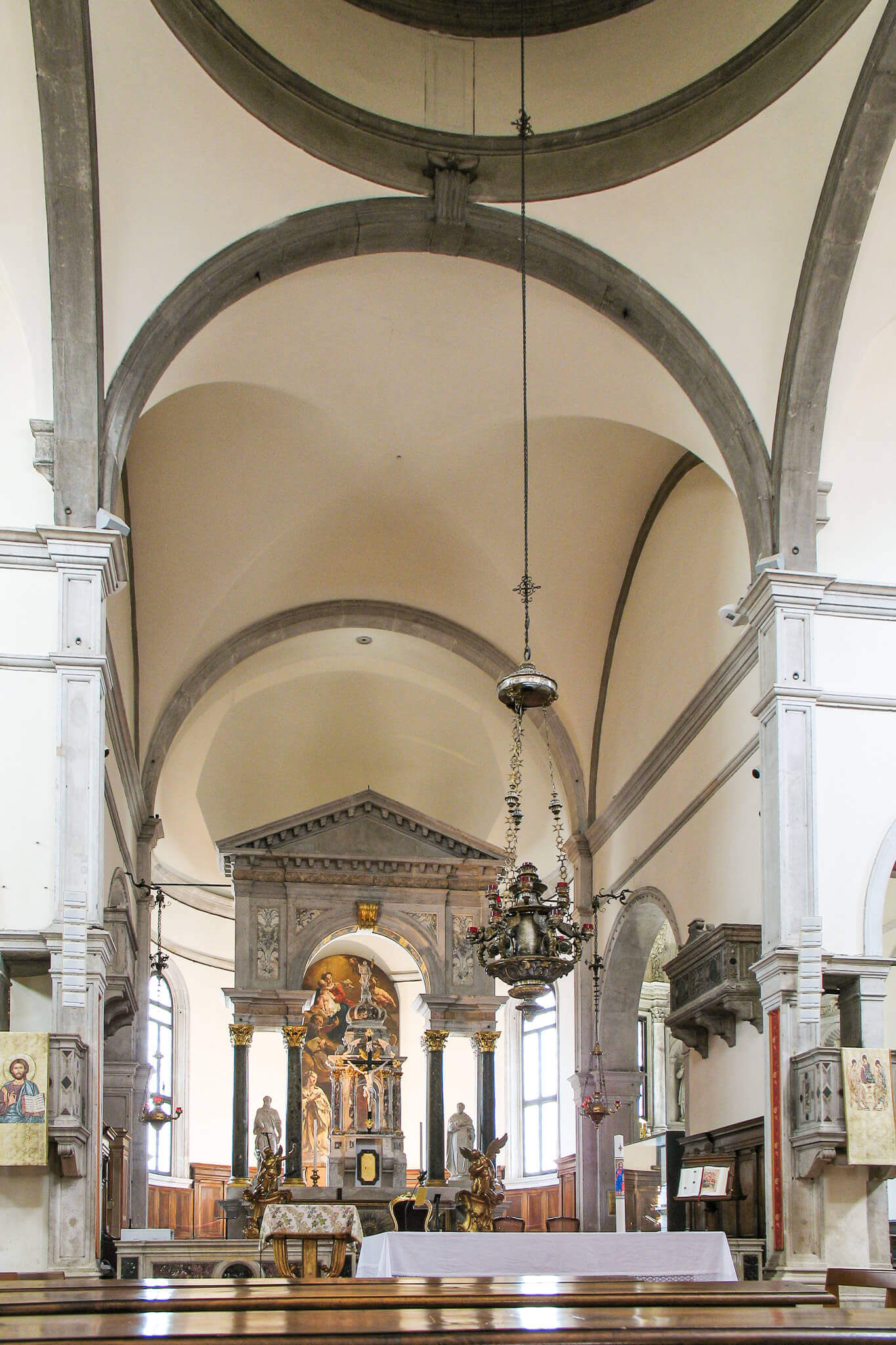
Next we’ll veer south towards the Santa Maria Formosa church (Church of the Purification of Mary). The church was built in 1492 over the foundations of a 7th-century church. Interestingly, the facade facing the canal is in the Renaissance style and built in 1542, while the one facing the square is Baroque and built in 1604. Part of Chorus Pass.
Venetian Arsenal
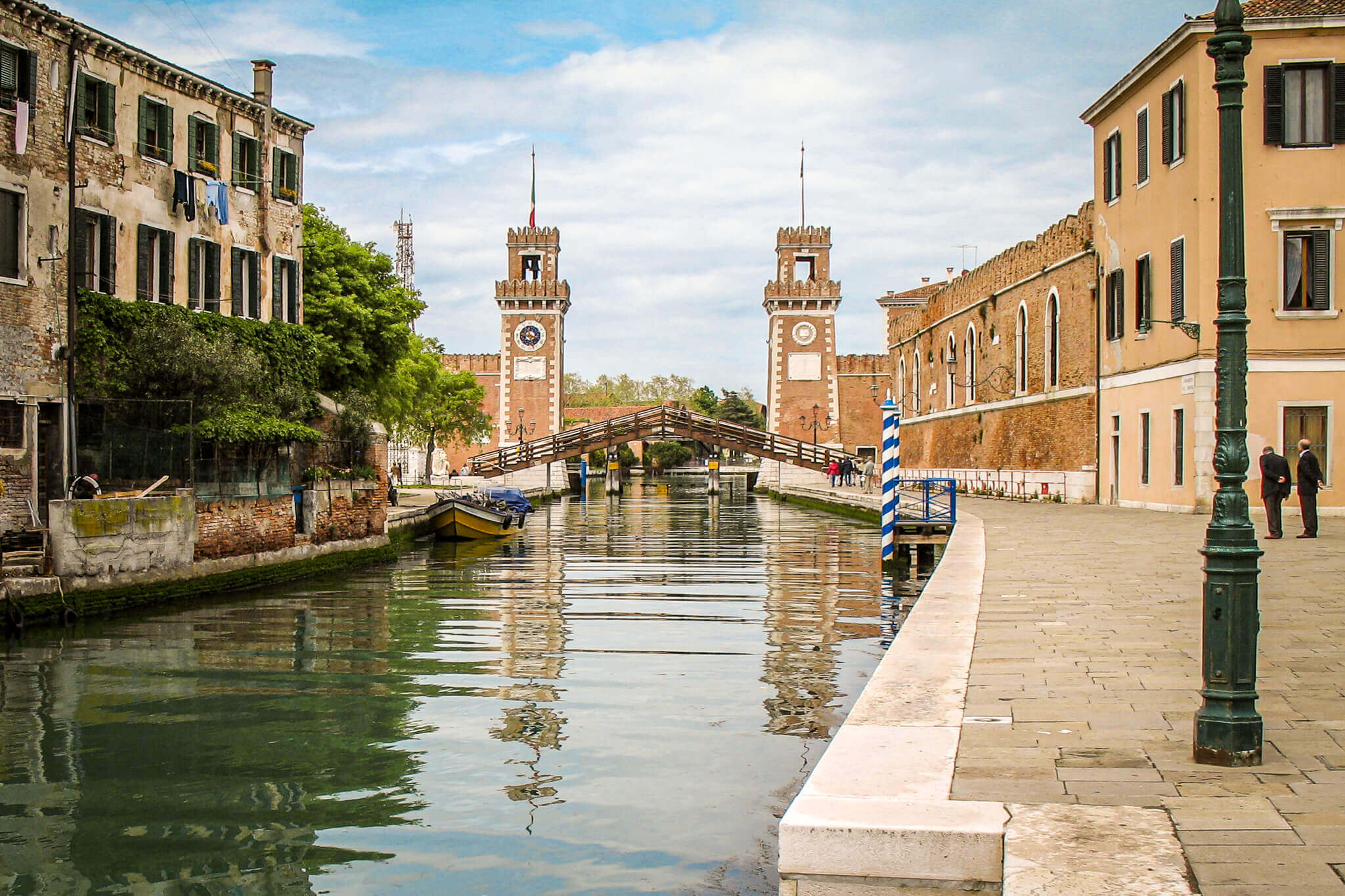
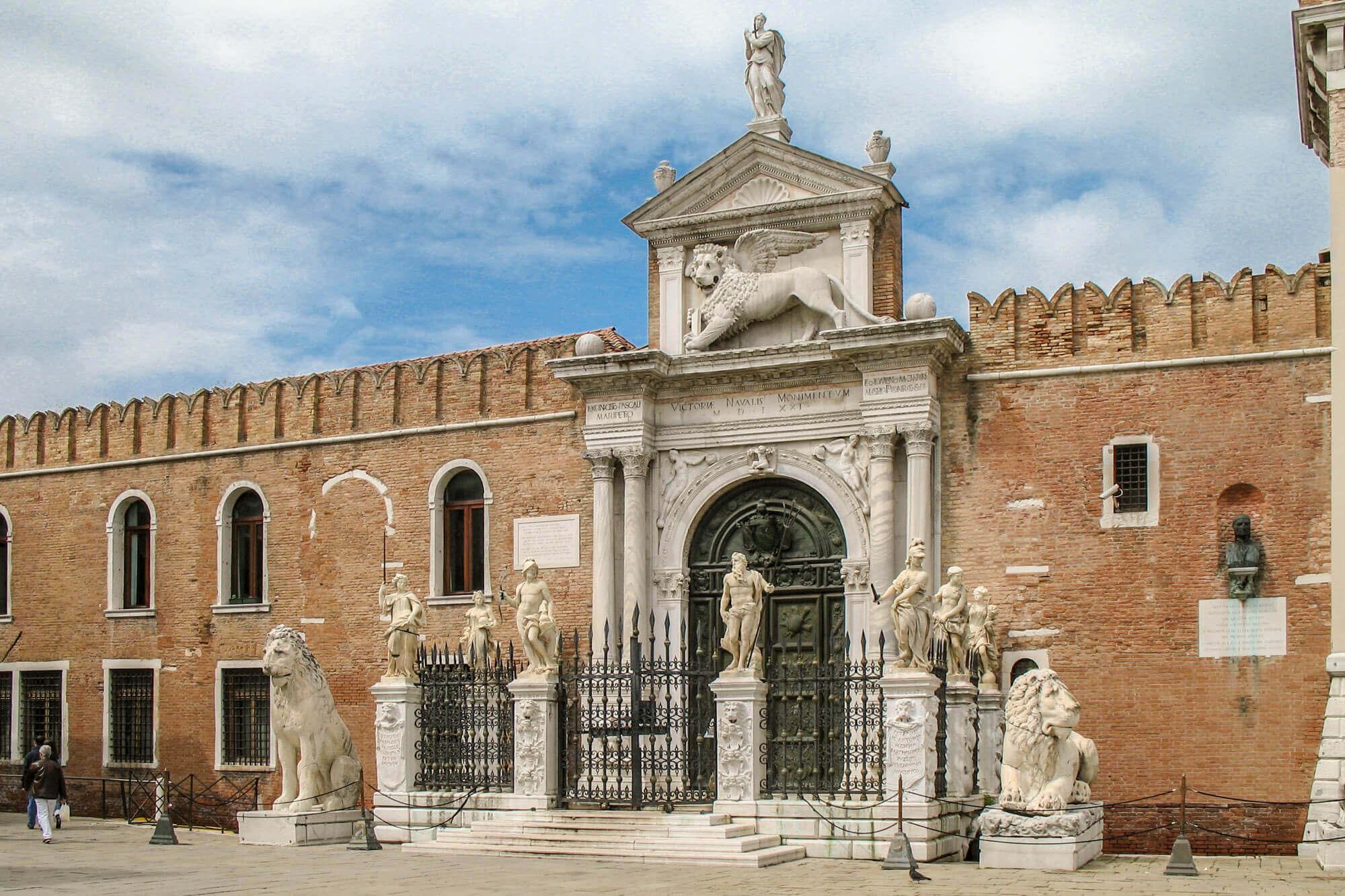
Continuing east, we’ll make our way to the Venetian Arsenal, a complex of former shipyards and armouries that were key to Venice’s former naval power. Constructed around 1100, it was the largest industrial complex in Europe covering 110 acres, approximately 15% of Venice. Galileo consulted for the Arsenal, solving shipbuilding problems and developing new innovations. Venice’s naval power was critical in its ability to control trade in the Mediterranean, and therefore its wealth.
Garibaldi Monument and Giardini della Biennale
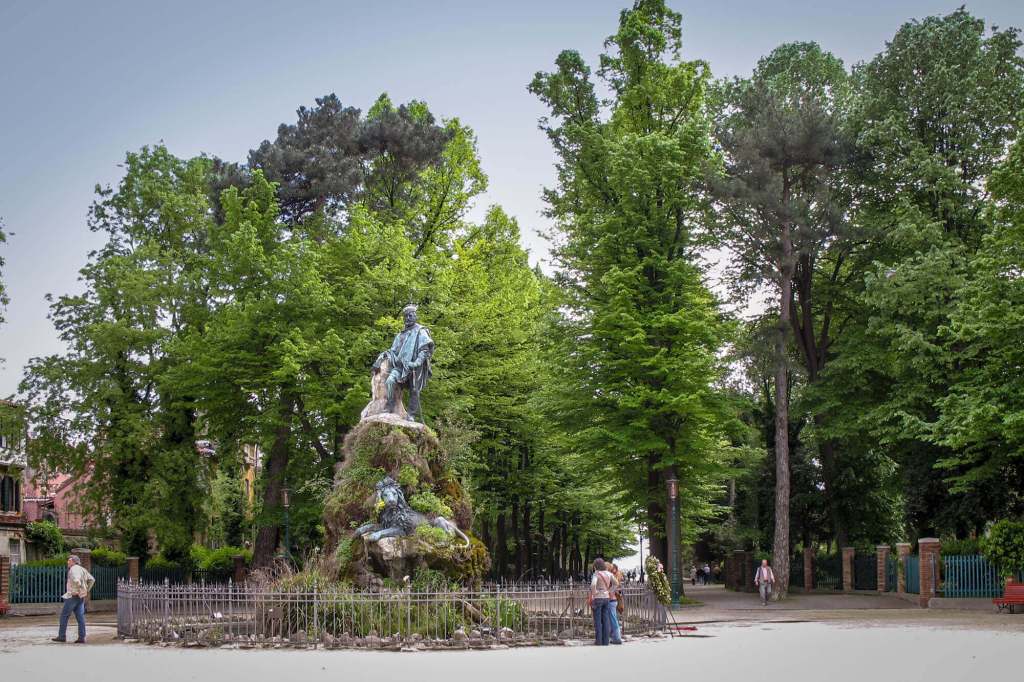
We’ll end our day with a walk to the eastern tip of Venice, which contains some lovely park area that few tourists see. You’ll feel like a local. Make your way to the Garibaldi Monument (Monumento a Guiseppe Garibaldi), and walk along the tree-lined Viale Guiseppe Garibaldi, which leads to the lagoon. Continue walking along the picturesque section of Viale Giardini Pubblici to the Giardini della Biennale, gardens created by Napoleon, housing pavilions built through the 1900s.
Day 3 – Churches of Venice
Day 3 starts near Piazza San Marco, and covers the southwest side of Venice, with some interesting churches off the beaten path. Several churches are part of Chorus Pass.
Santa Maria della Salute
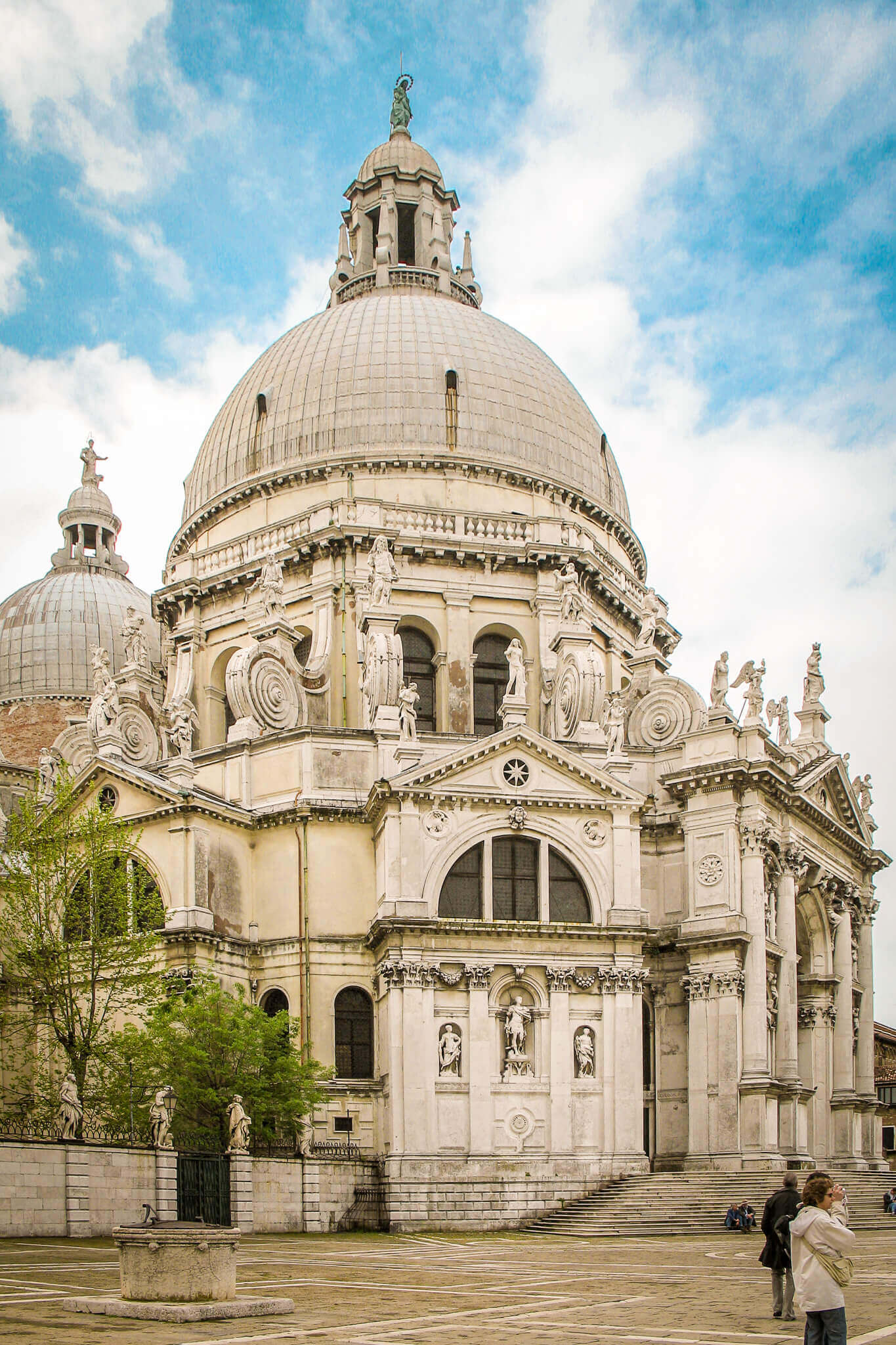

The Santa Maria della Salute basilica is located opposite Piazza San Marco at the southern entrance of the Grand Canal. It’s dedicated to the Virgin Mary for delivering Venice from the 1630 plague that killed 1/3 of the city’s population (and even more across the rest of the lagoon). A small entrance fee applies (not part of the Chorus Pass).
Santa Maria del Rosario or Gesuati
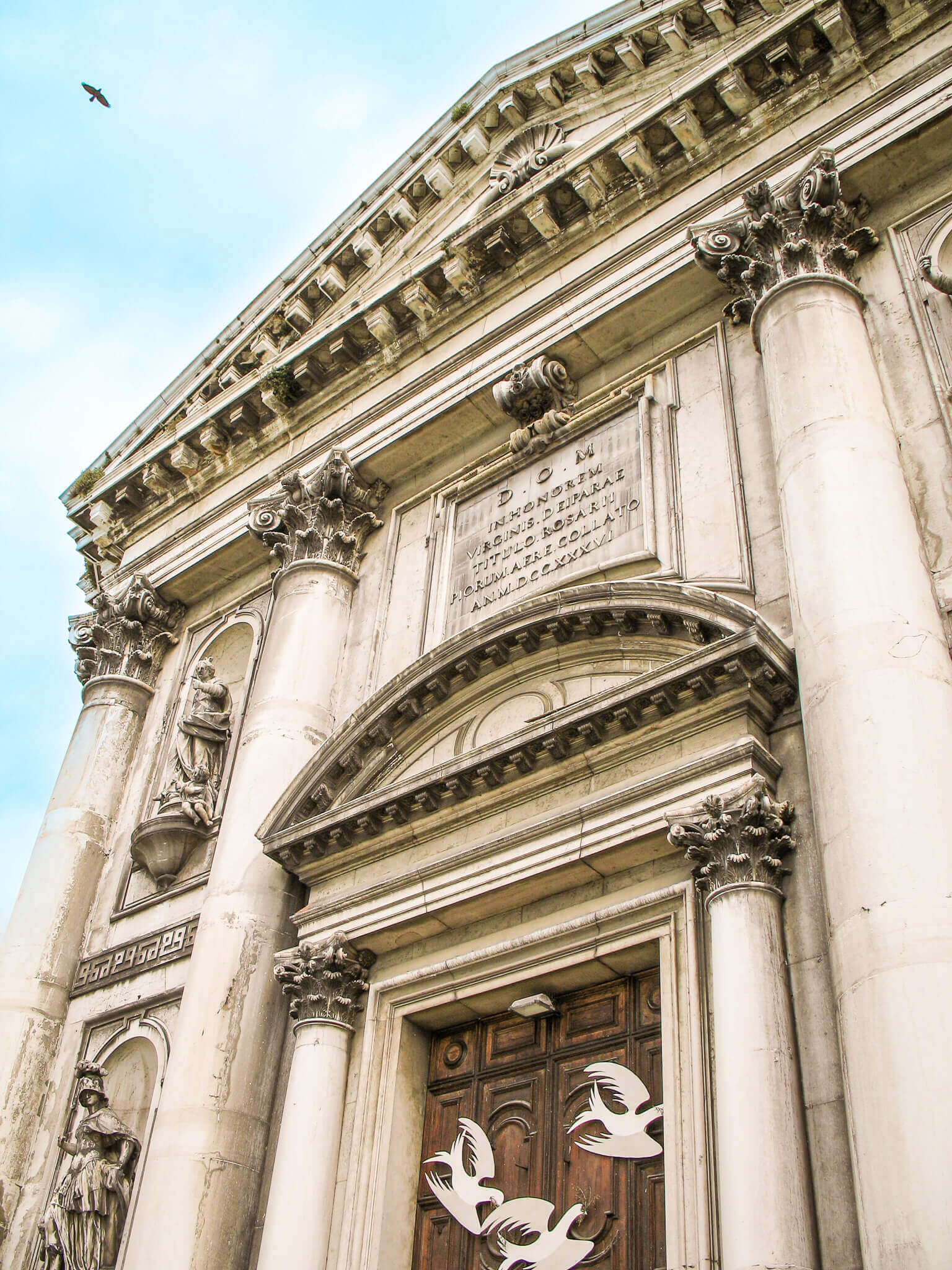
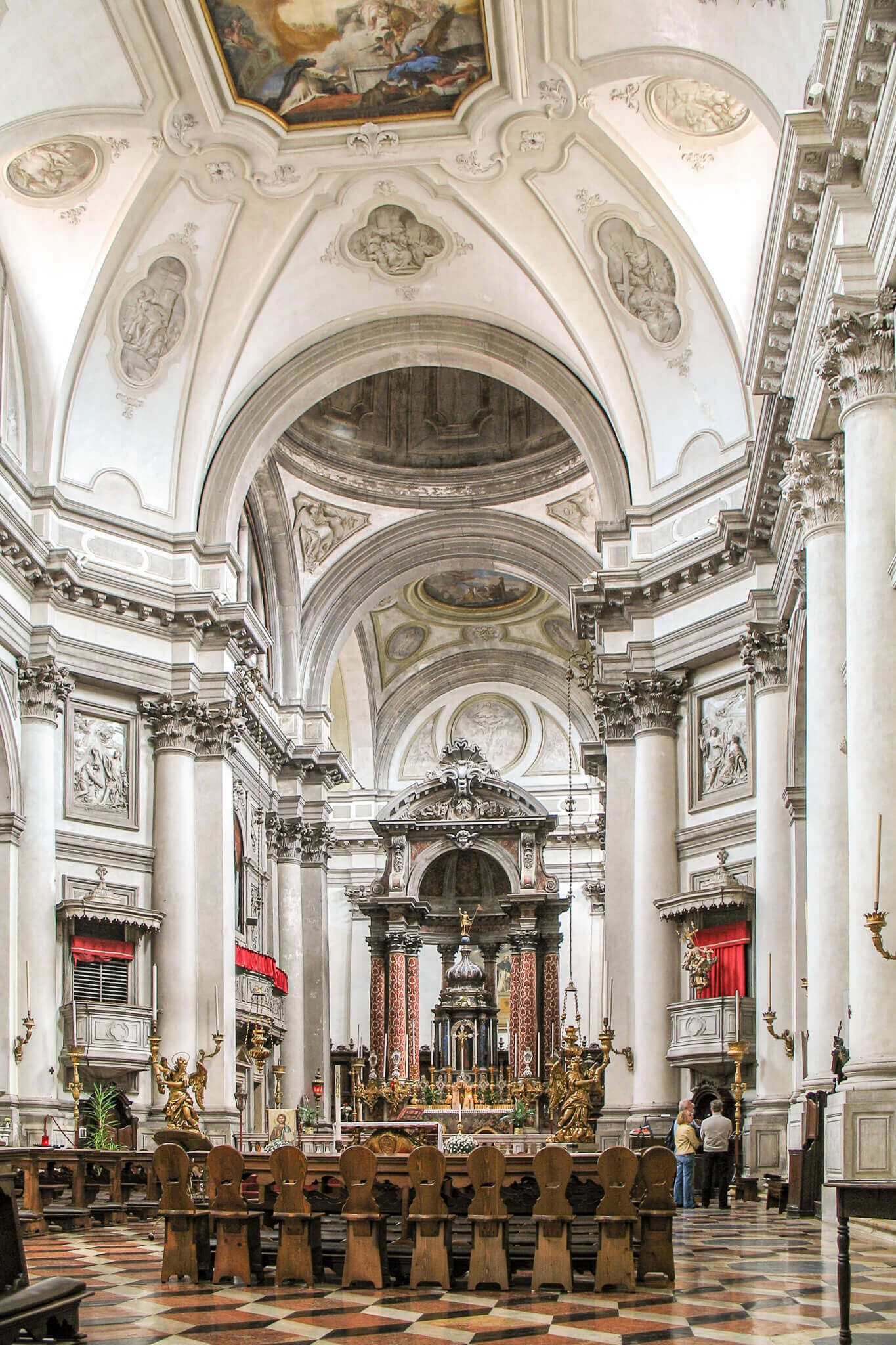
Santa Maria del Rosario, or Gesuati, is a church built between 1725 and 1755 notable for its original Rococo (late Baroque) decoration. Part of Chorus Pass.
San Sebastiano
San Sebastiano is a Renaissance church built between 1506 and 1548. Part of Chorus Pass.
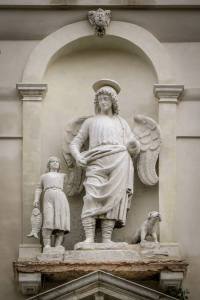
Chiesa dell’Angelo Raffaele
The Chiesa dell’Angelo Raffaele is a church dedicated to the archangel Raphael. The sculpture over the entrance depicts Raphael, patron saint of fishermen, with a boy holding a fish, and a dog. Interestingly, it is one of the only two churches in Venice that you can walk around, detached from other buildings.
San Nicolò dei Mendicoli
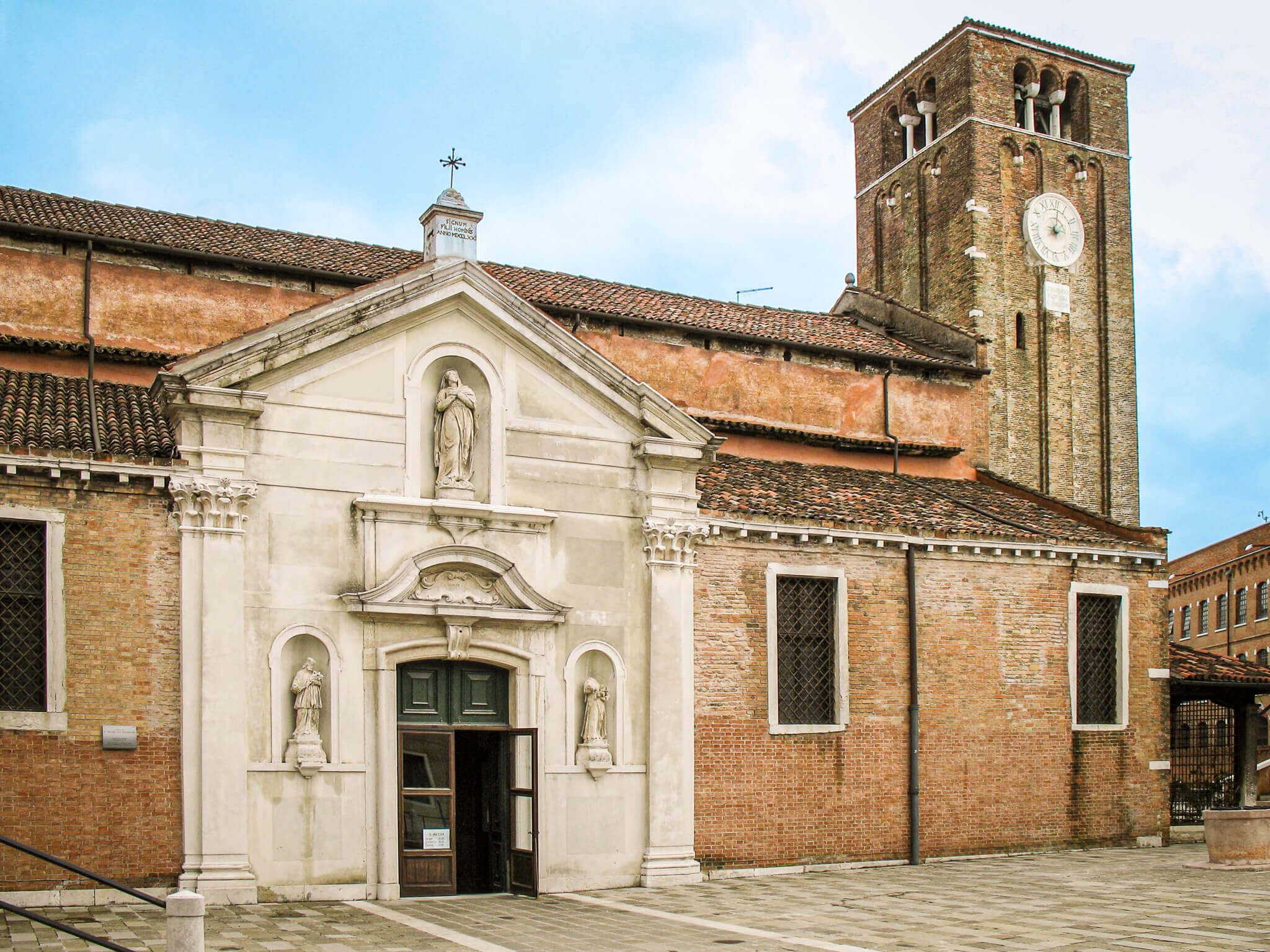
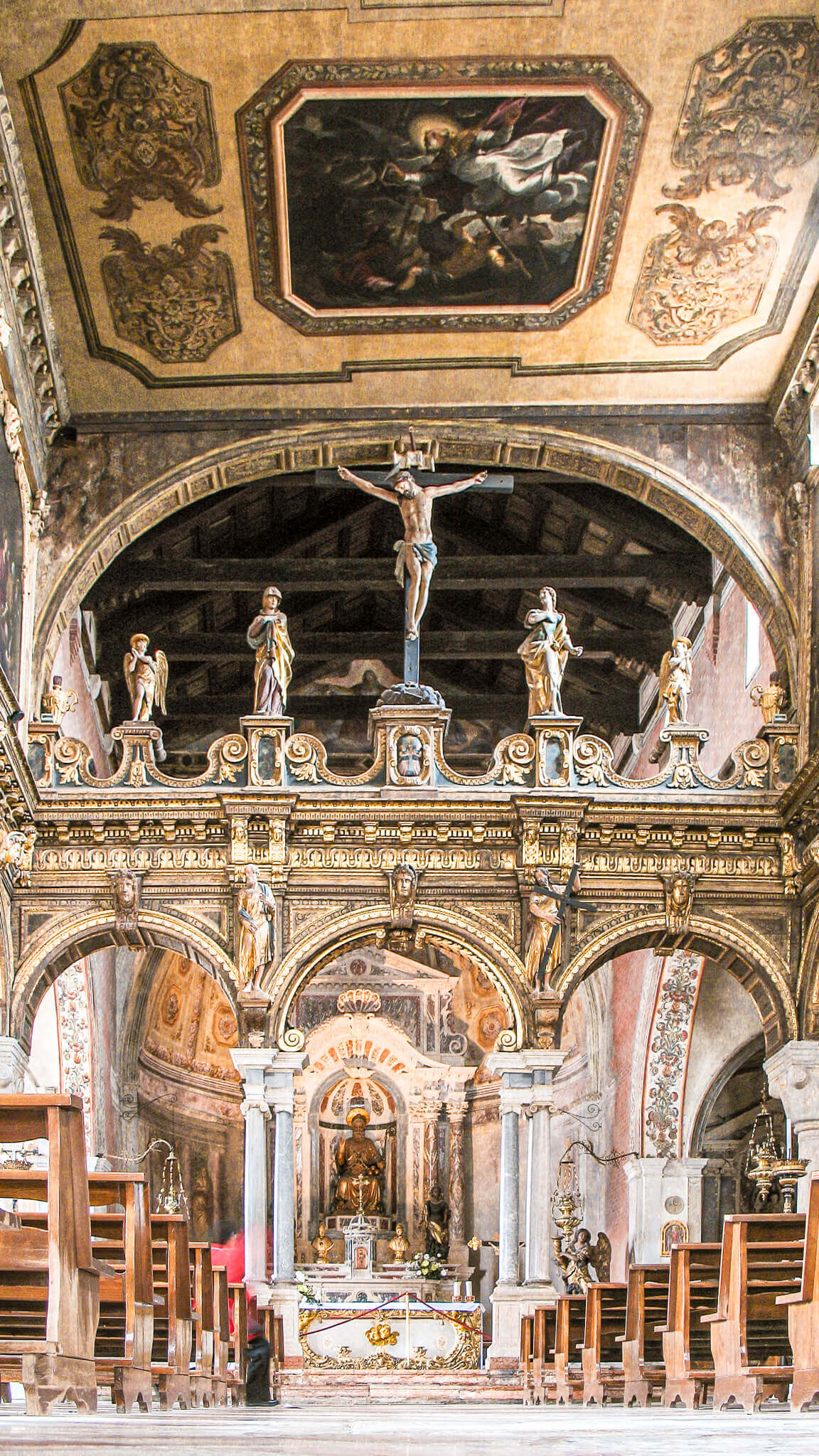
The San Nicolò dei Mendicoli church dates from the 12th century, although rebuilt several times. While small and unassuming from the outside, the dim interior is worth a visit.
Santa Maria Gloriosa dei Frari
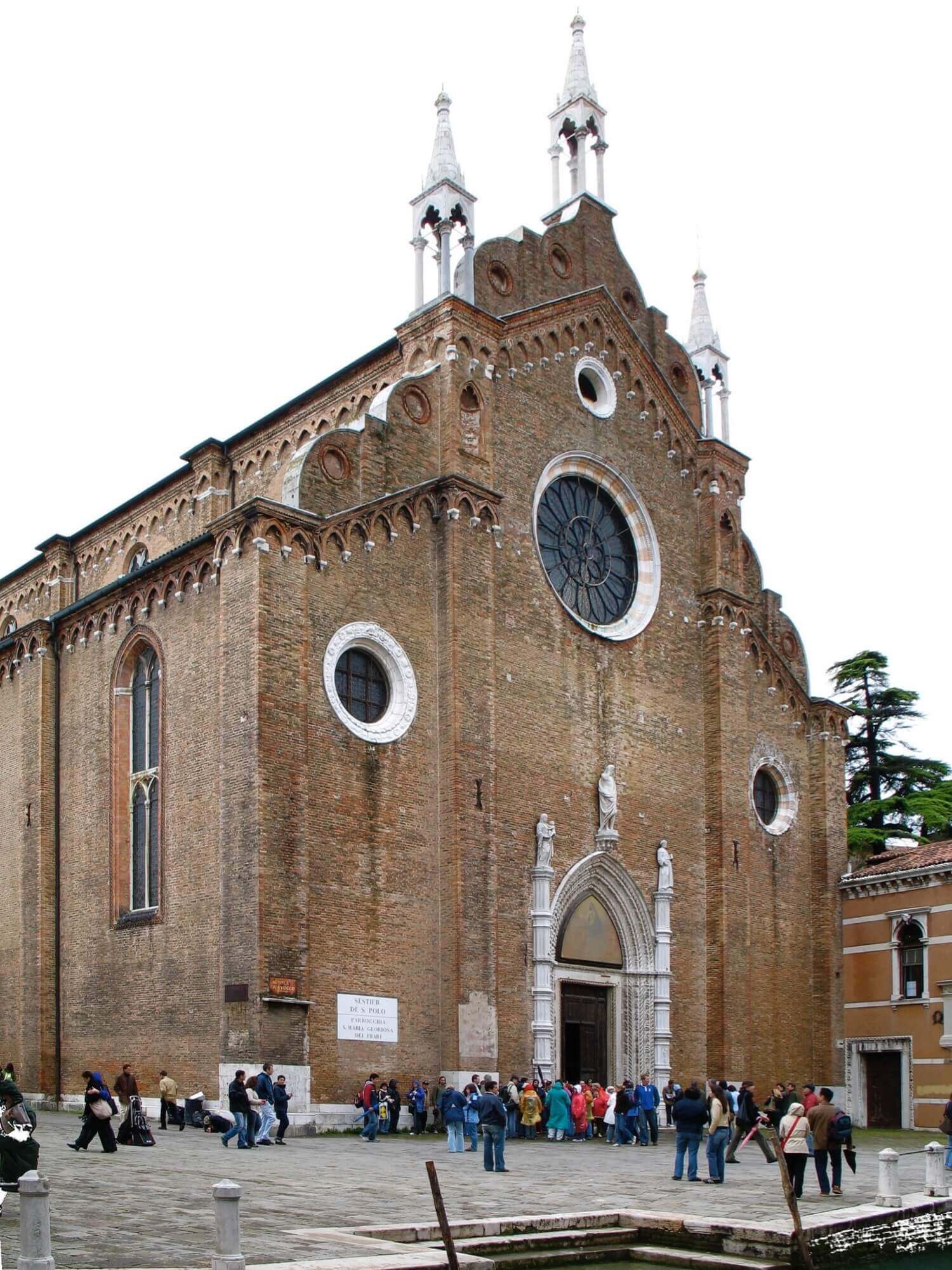
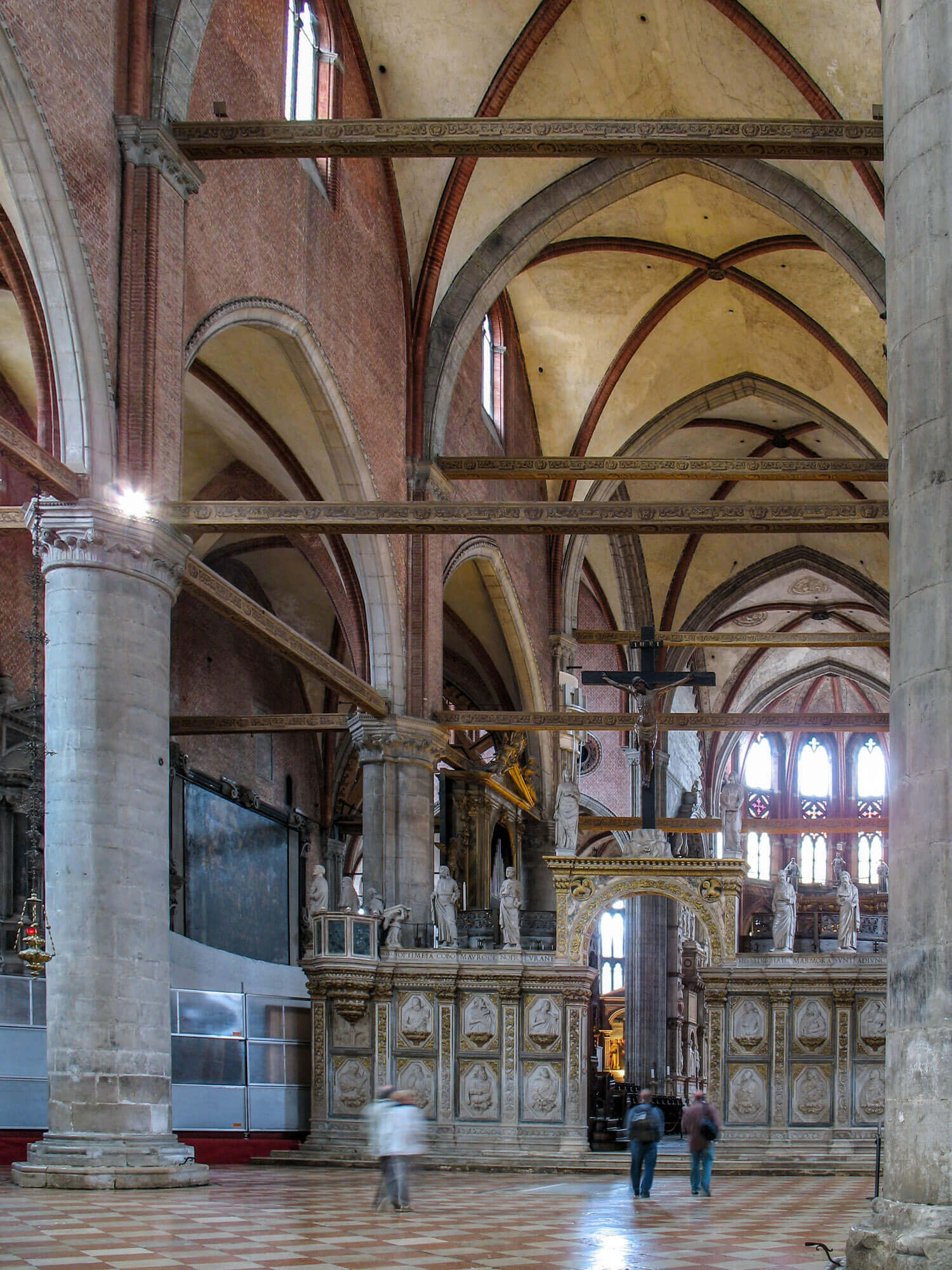
Making our way back towards central Venice, the Santa Maria Gloriosa dei Frari basilica (or simply I Frari) is another large Italian Gothic church. Originally built between 1250 and 1338, it was expanded over the following centuries. The simple brick exterior belies the important masterpieces within. I Frari is home to works of art by Titian and Bellini, and a sculpture by Donatello. Artists Titian and Canova and composer Monteverdi are buried here. Part of Chorus Pass.
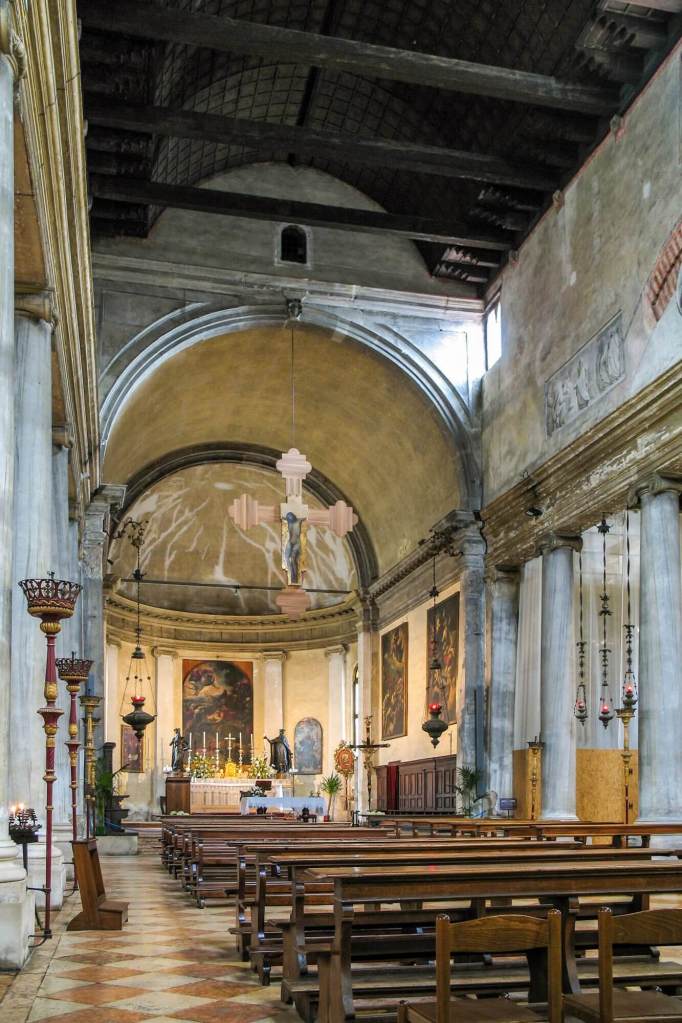
San Polo
Nearby is the San Polo church, a Gothic church from the 15th century built on the site of earlier churches. The detached campanile dates from 1362. One of the interior’s features is the ship’s keel roof. Part of Chorus Pass.
At this point, you’re near the Rialto area and not too far from Piazza San Marco, if you want to visit either one last time before leaving Venice.
Have you visited these attractions or tried this itinerary for your 3 days in Venice? Let us know what you thought in the comments!
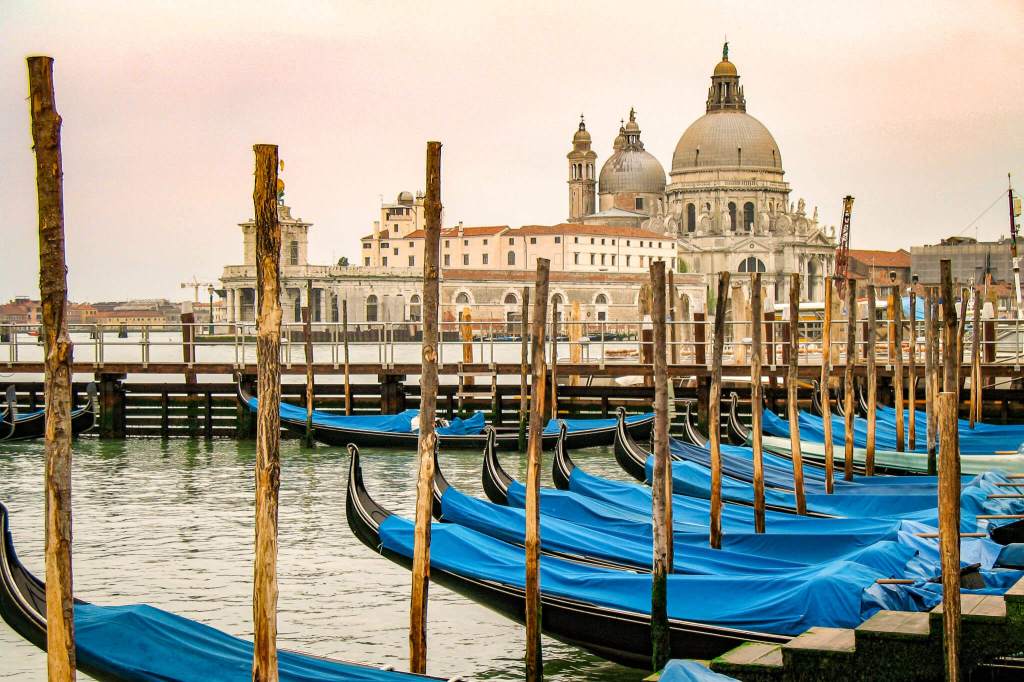
Leave a comment